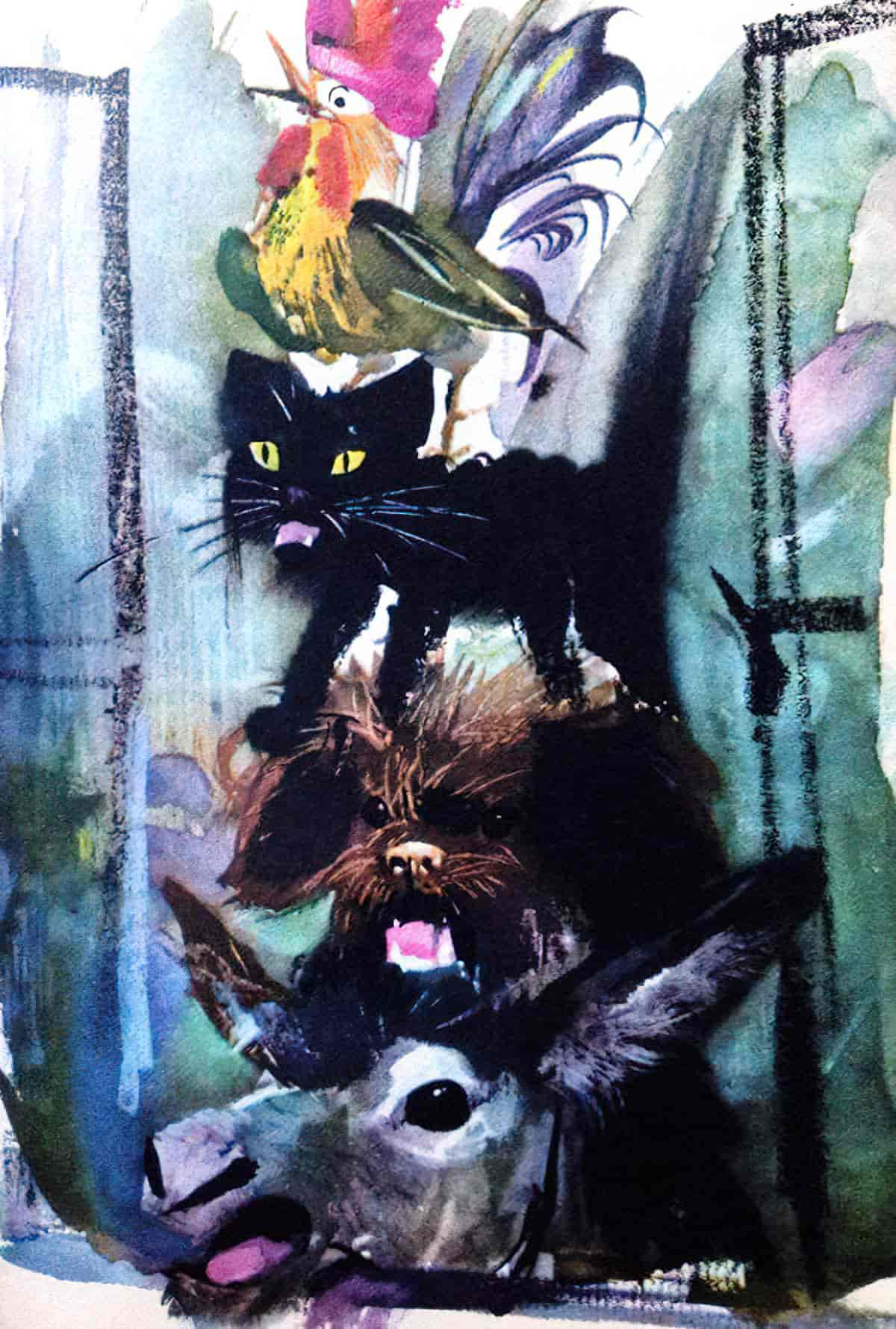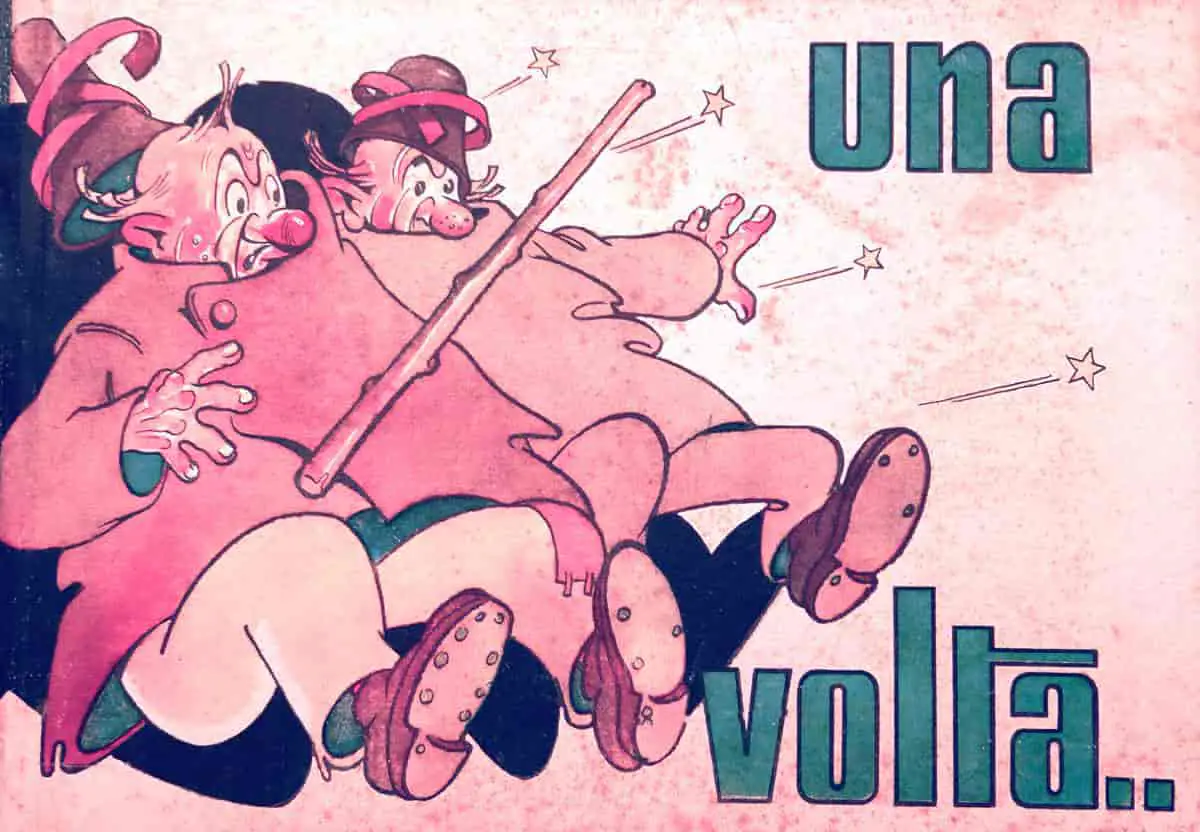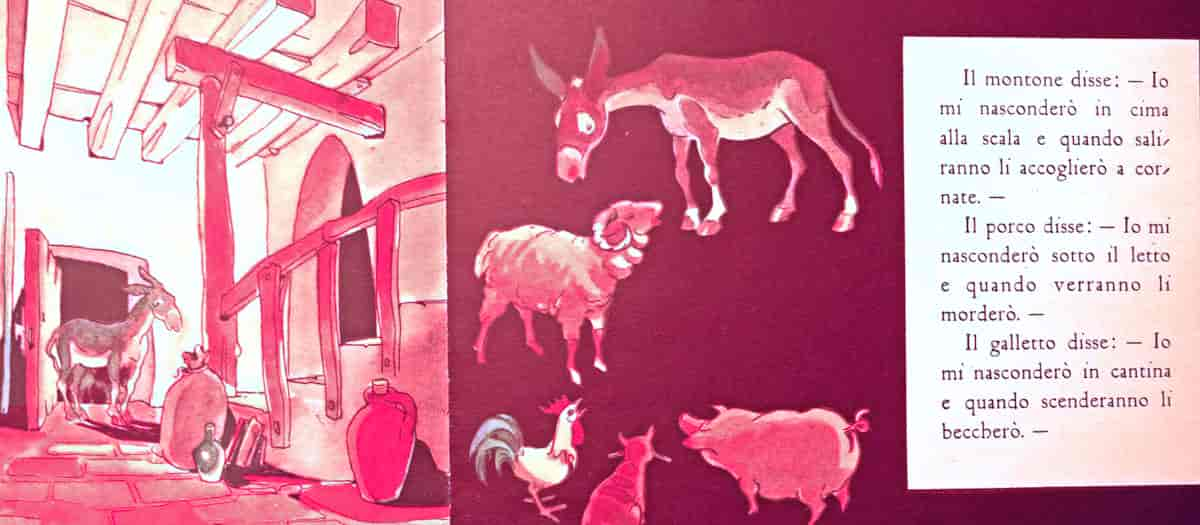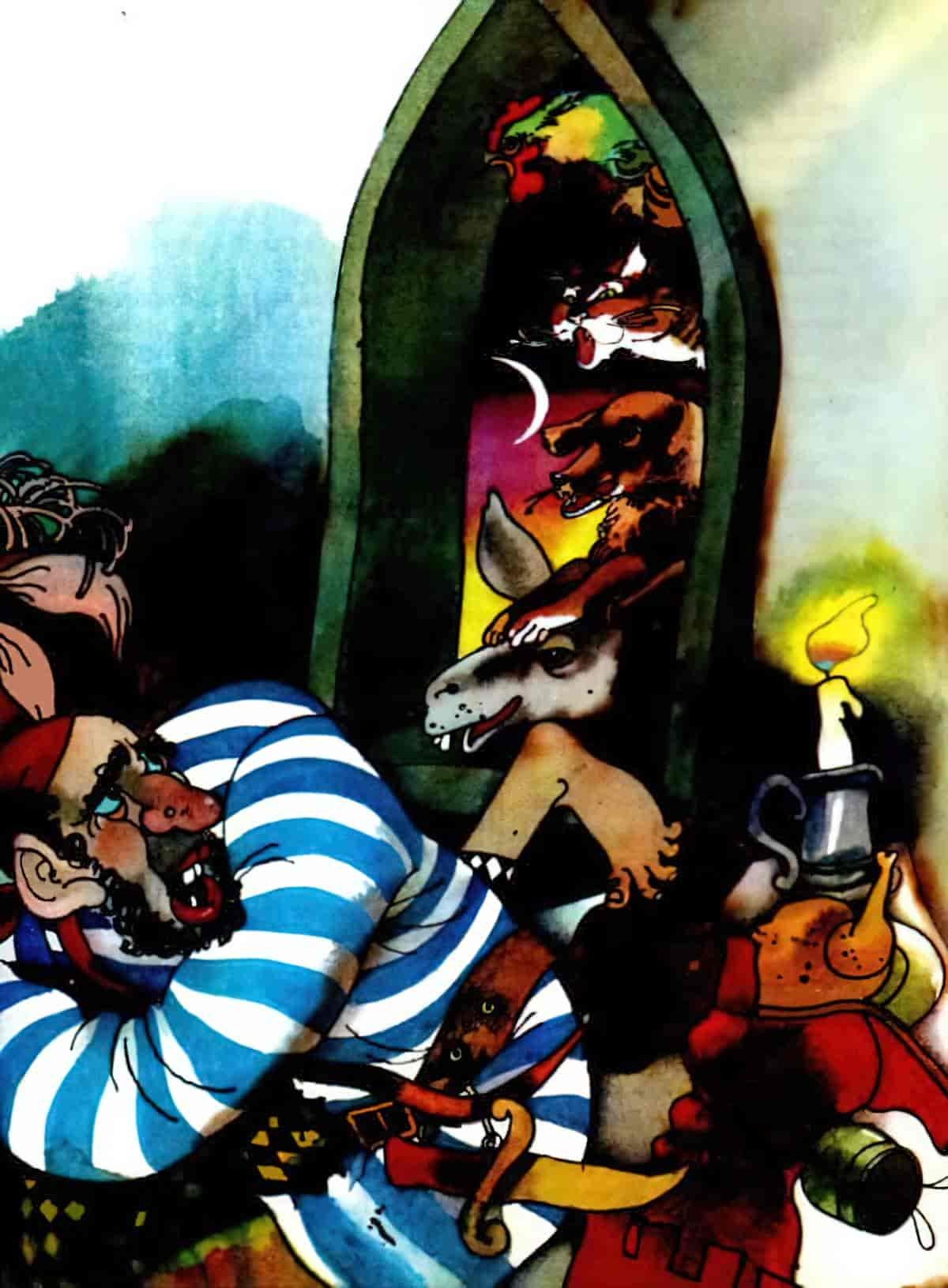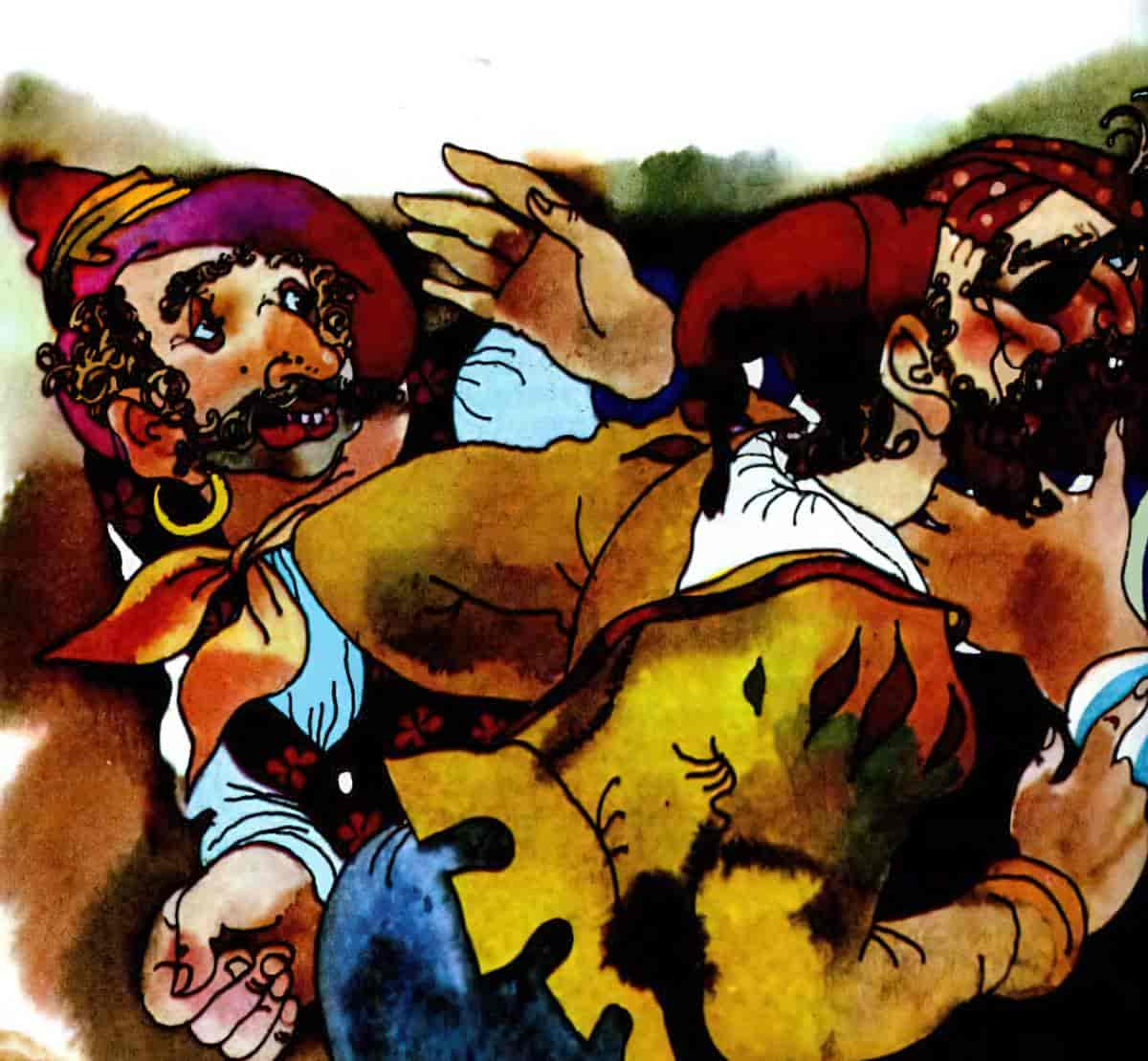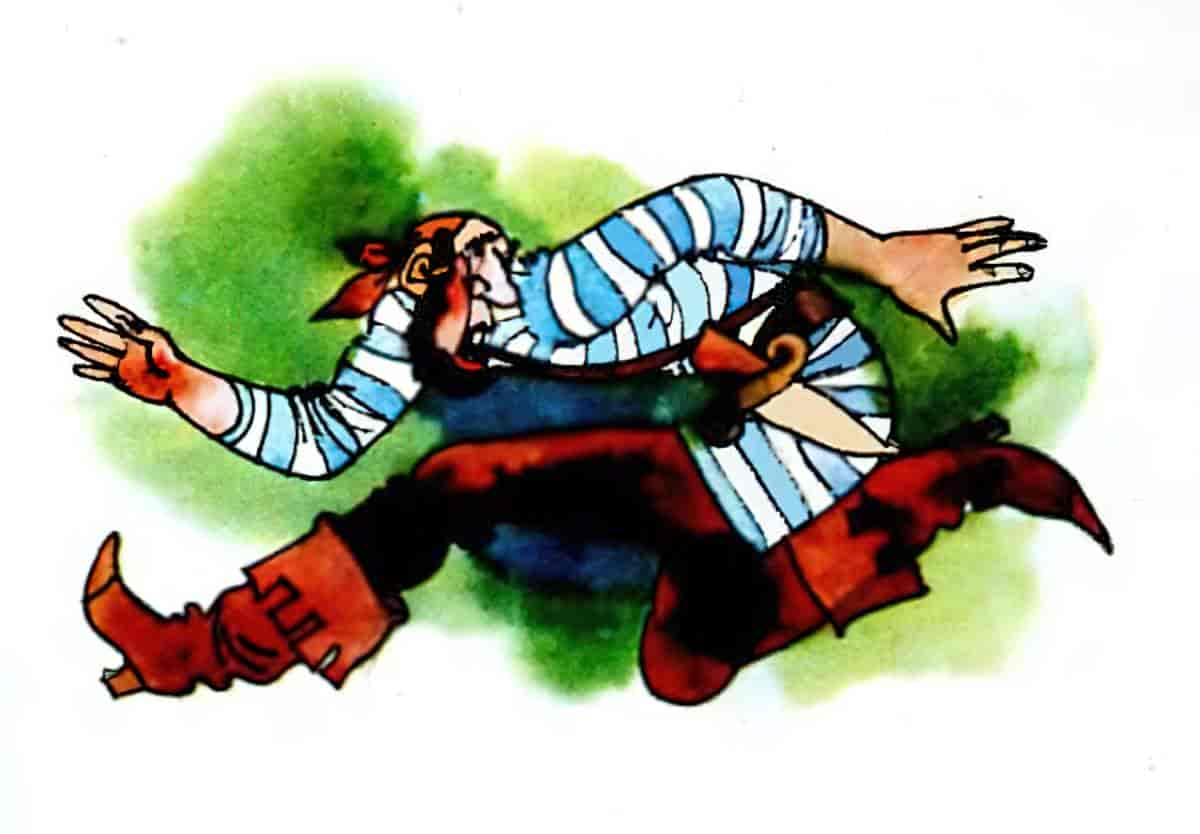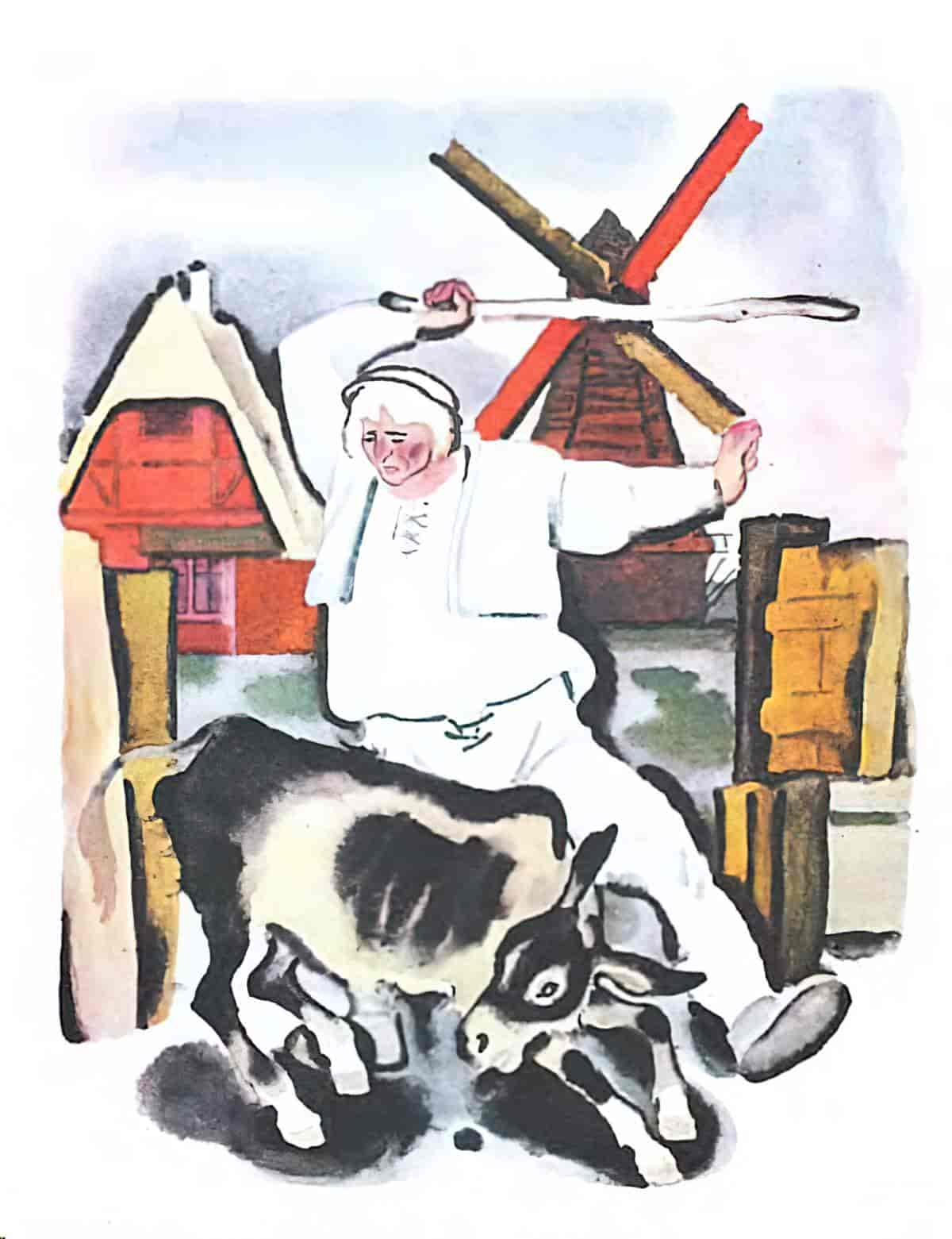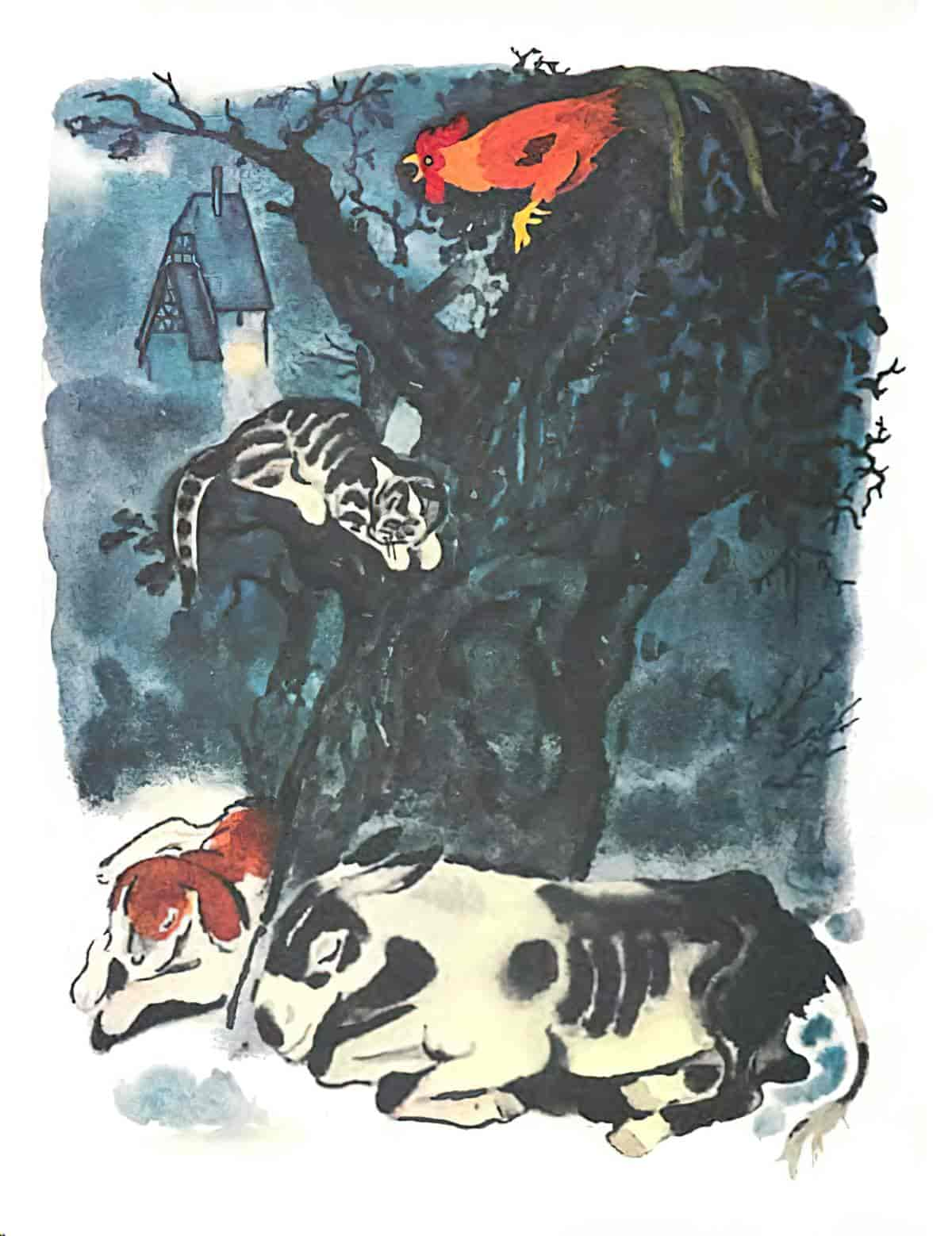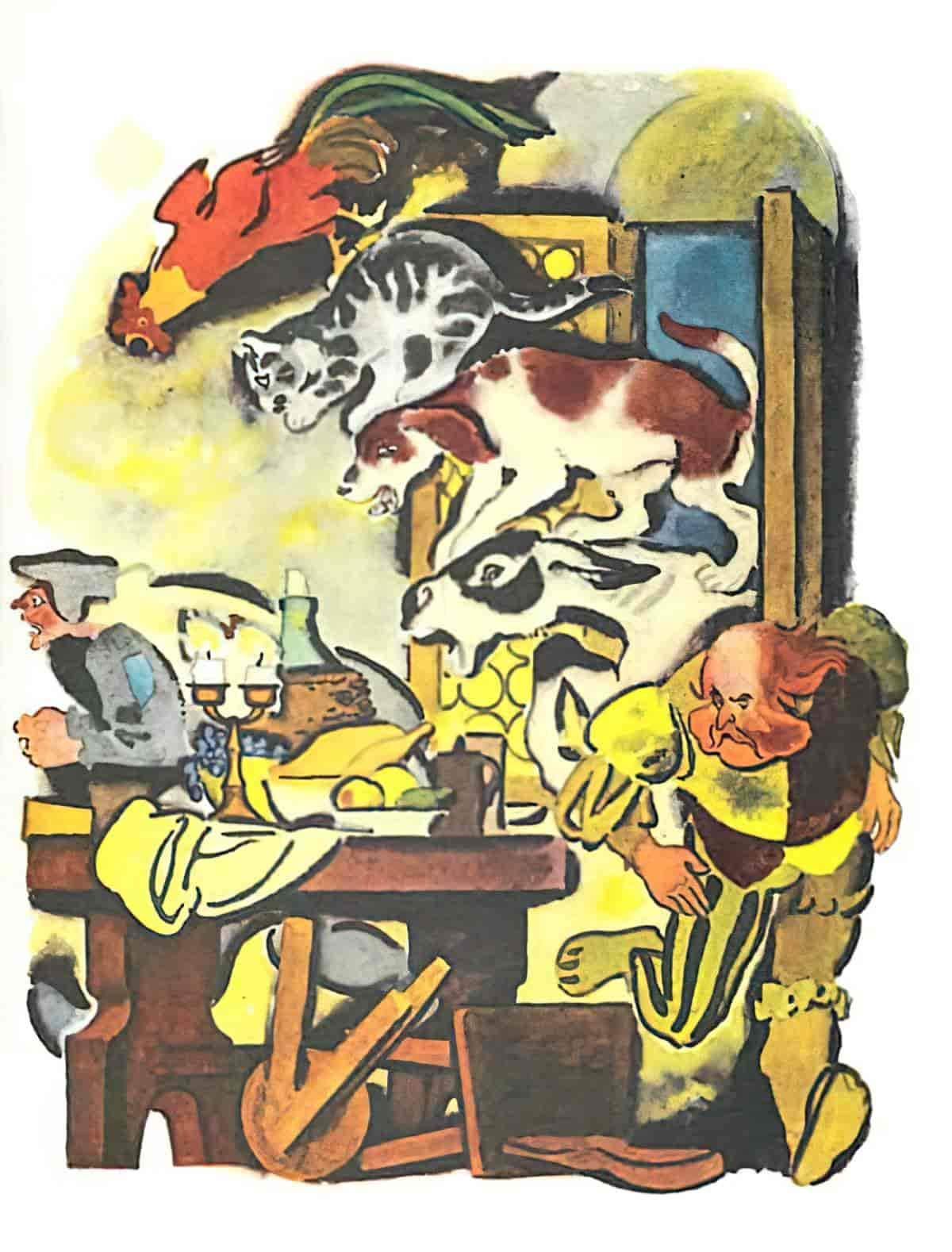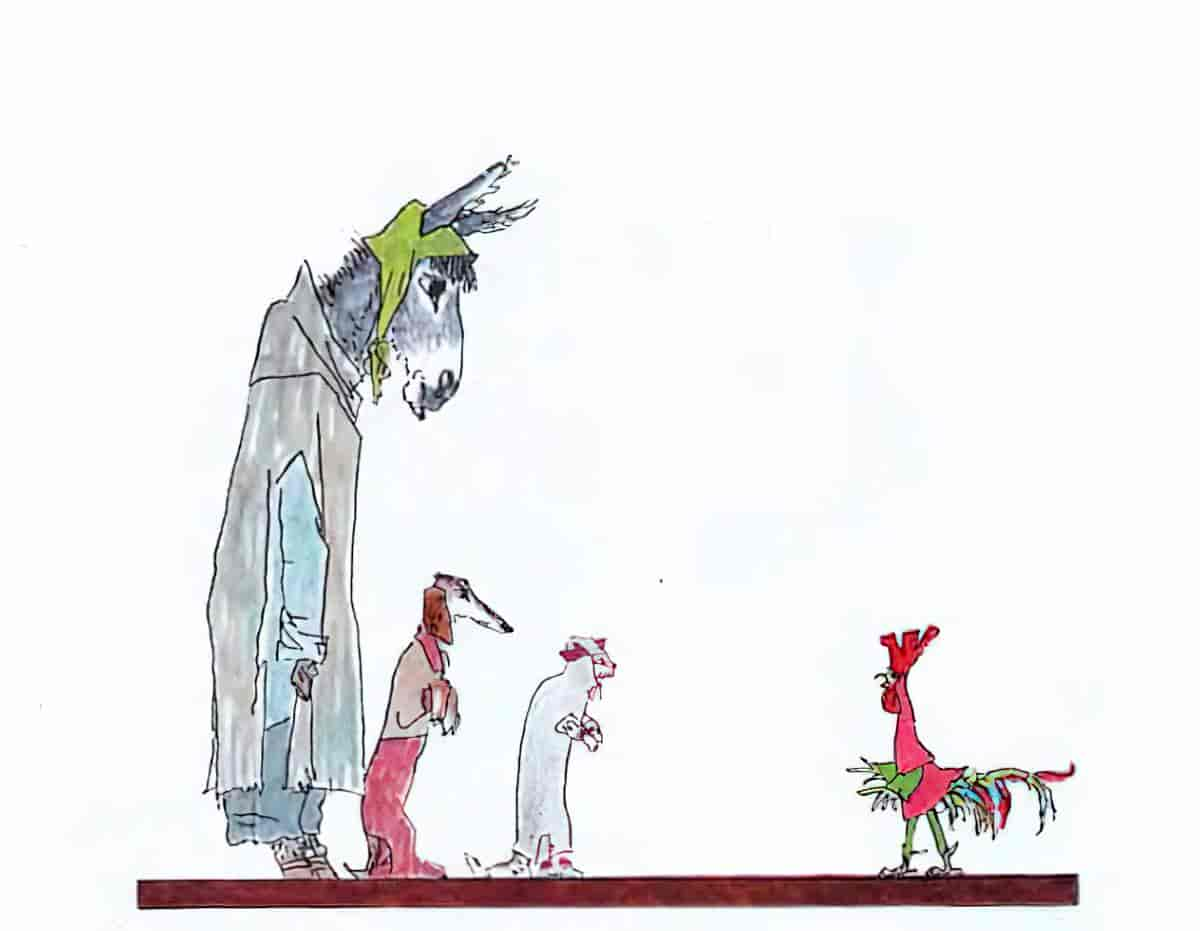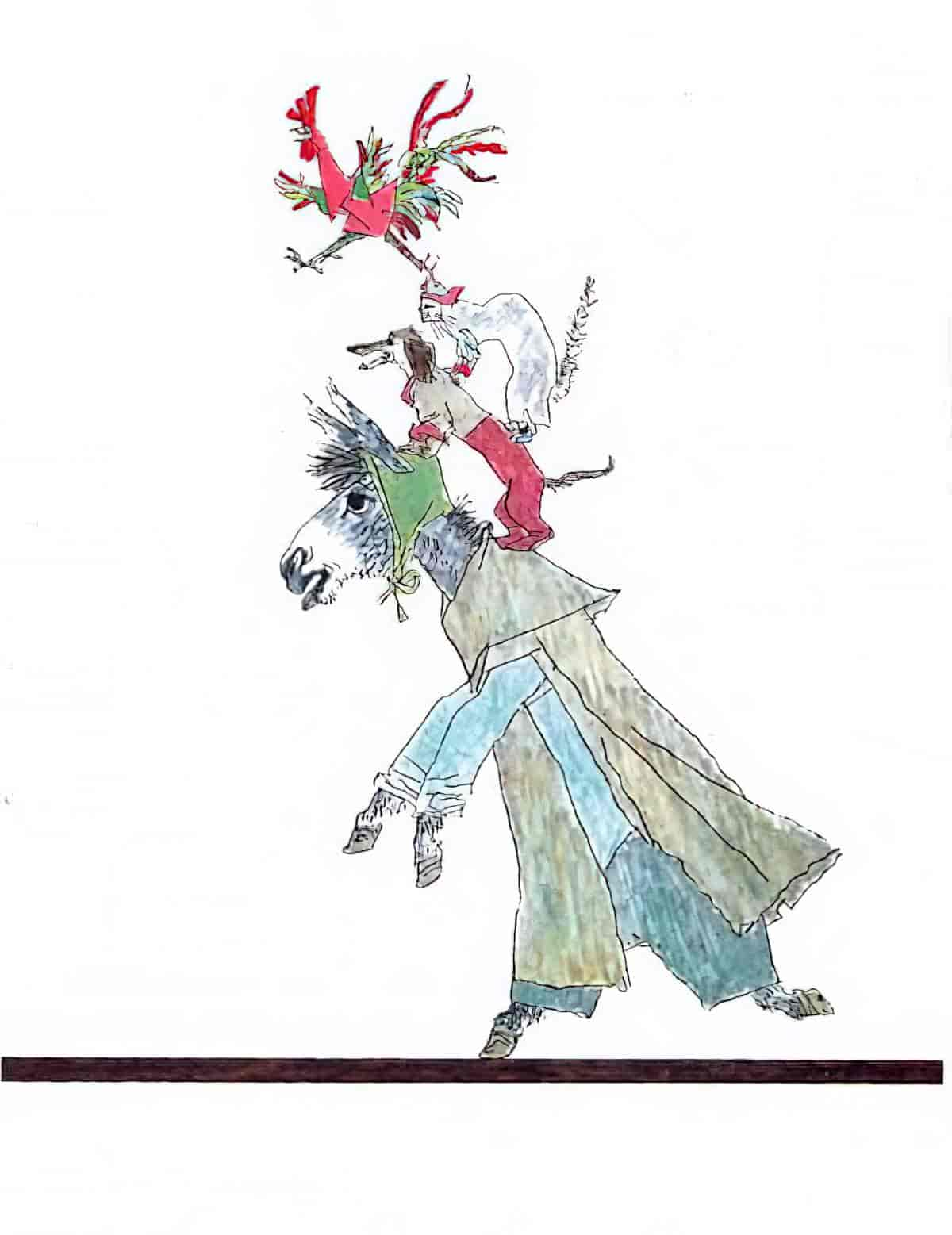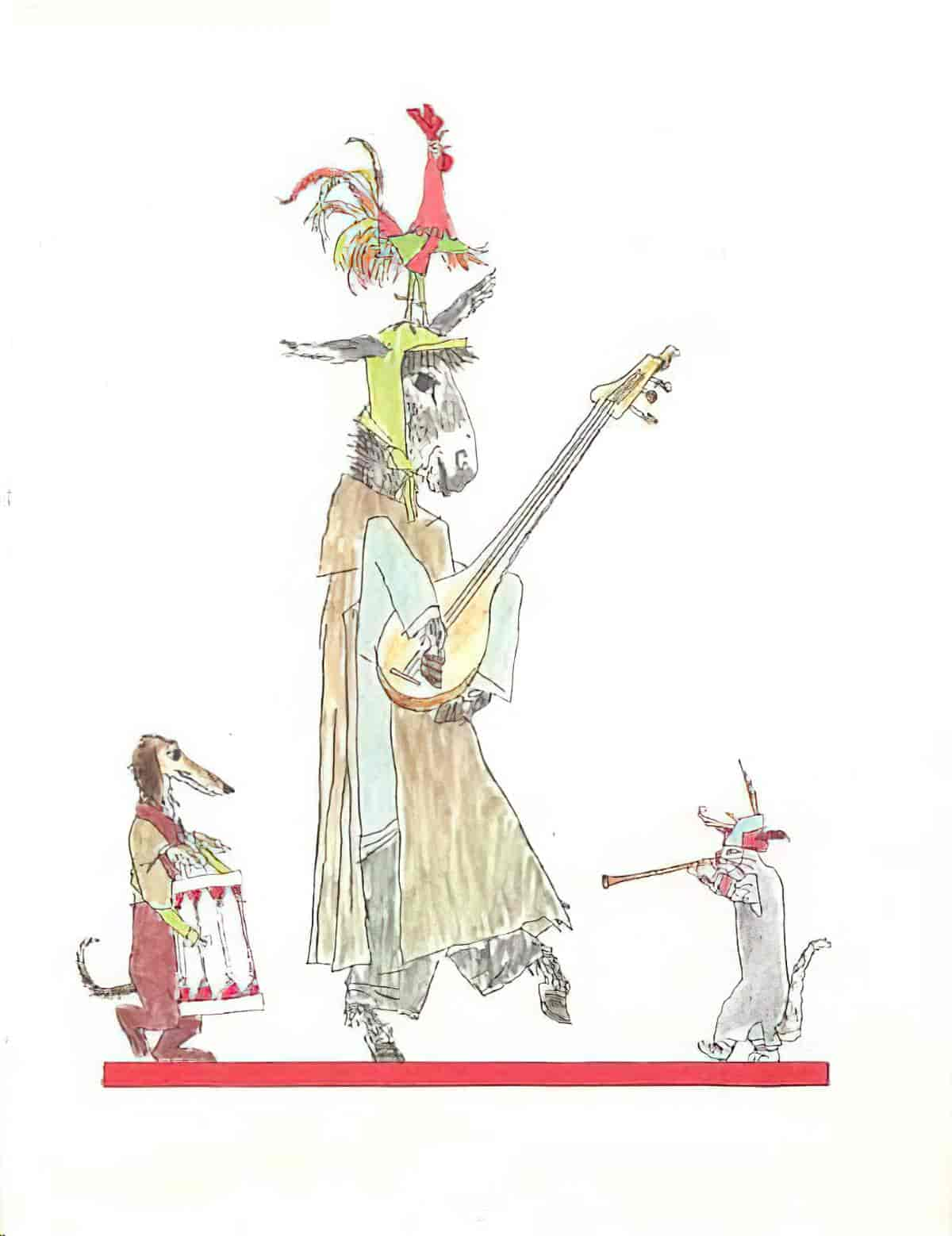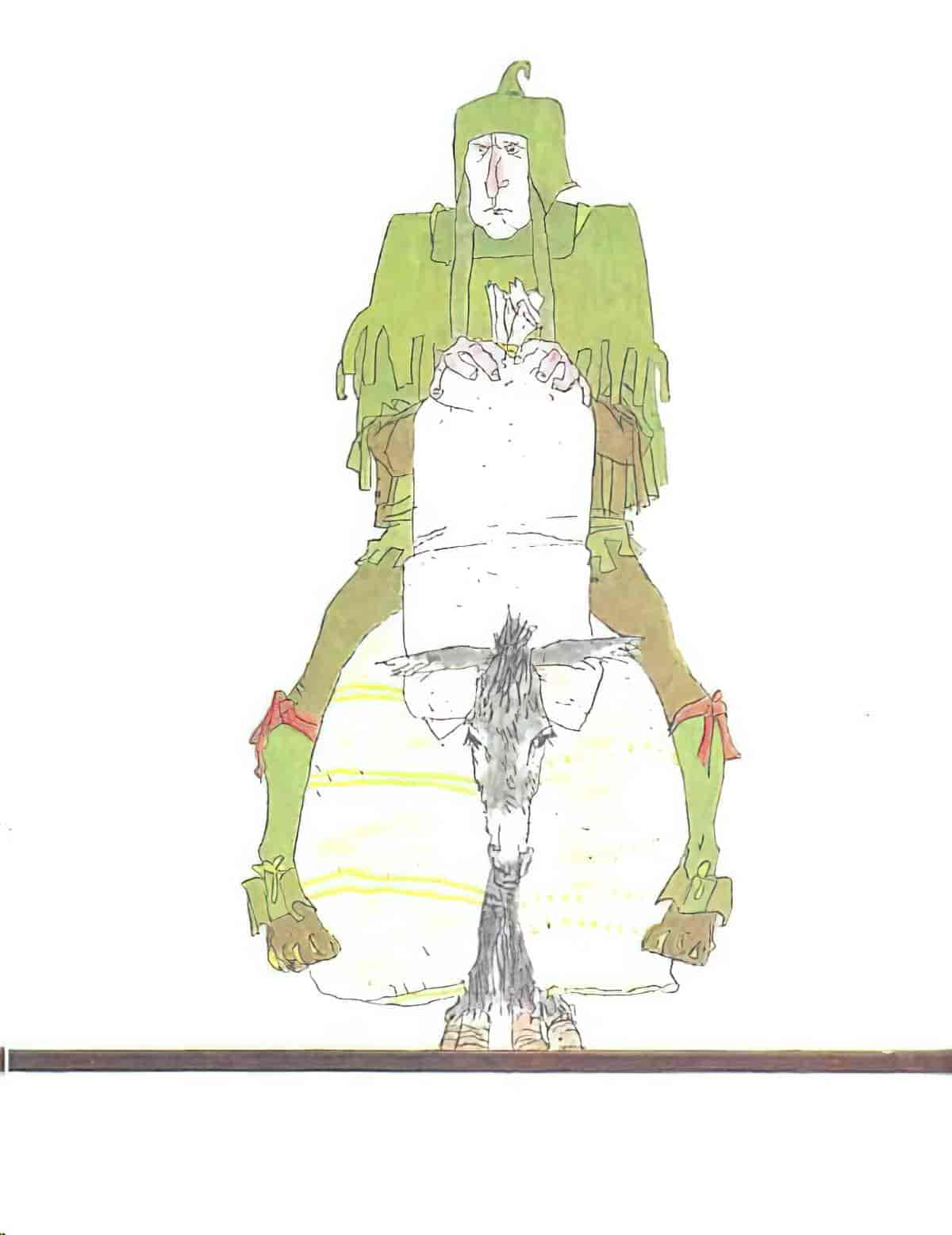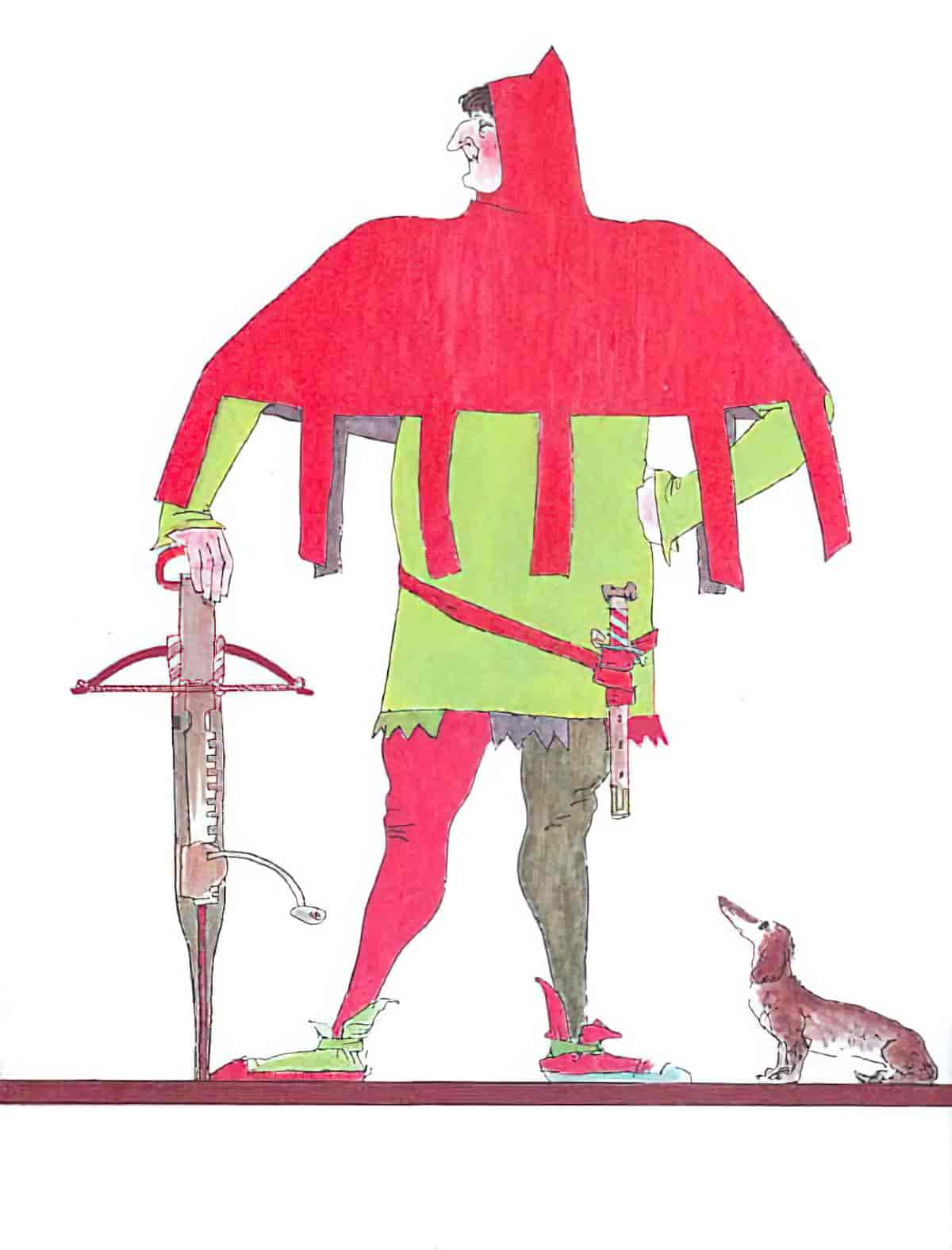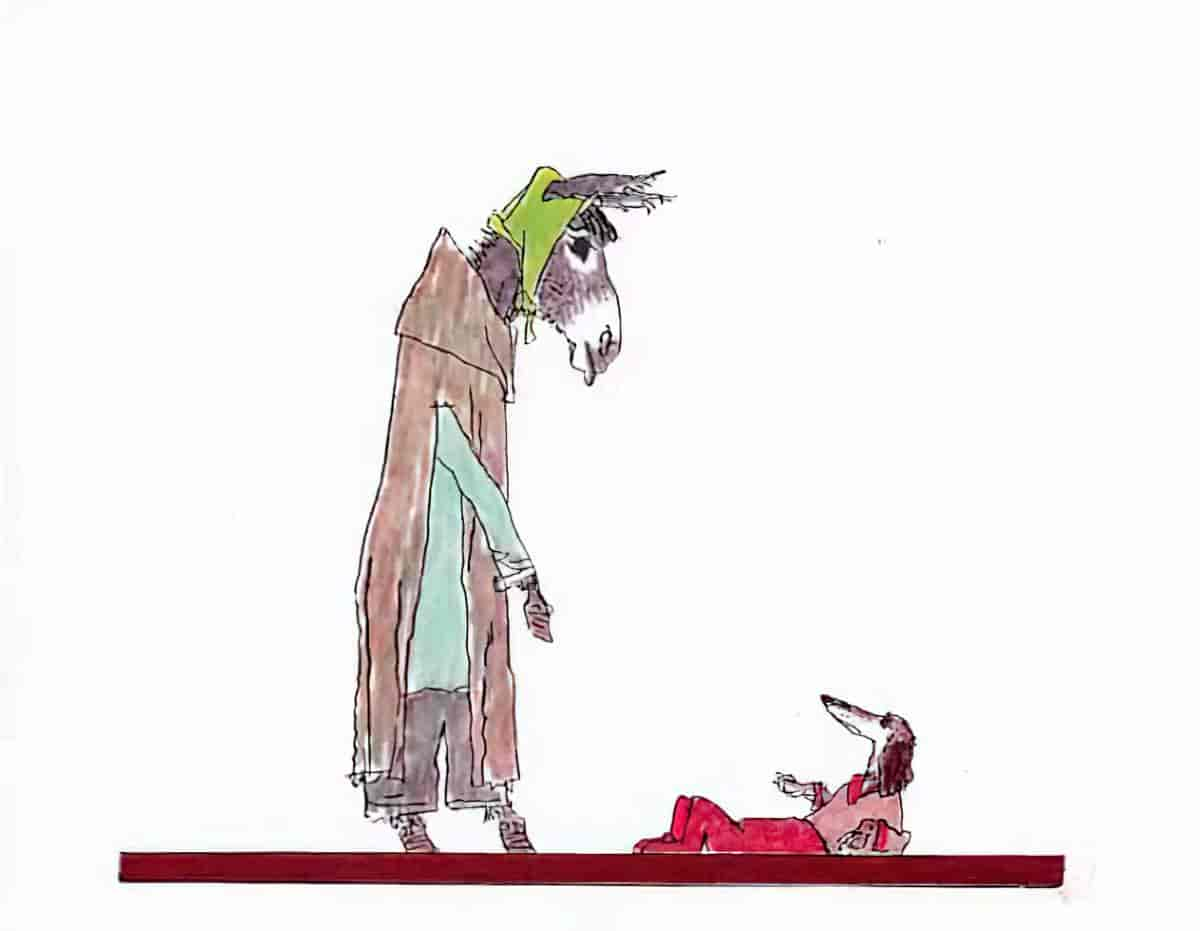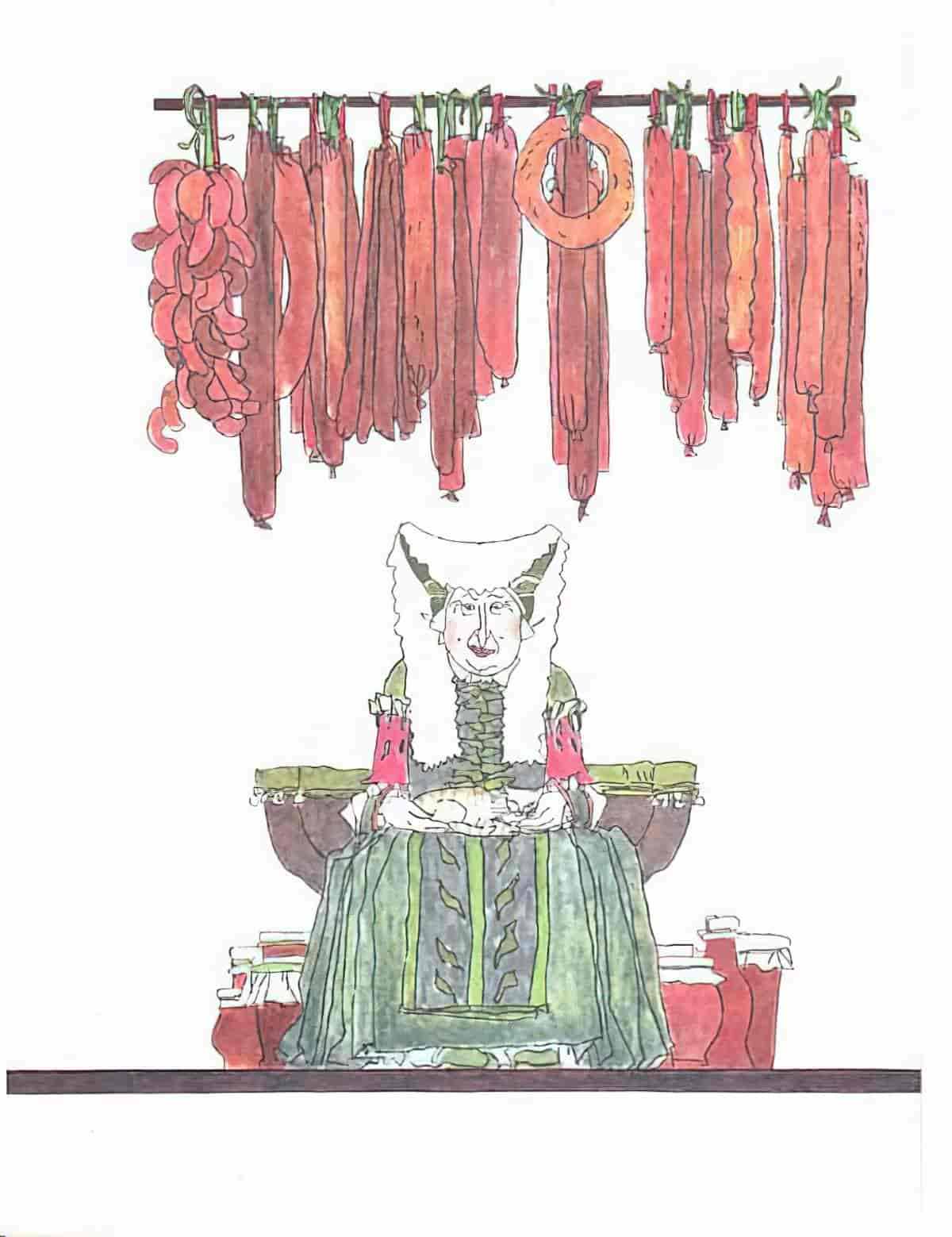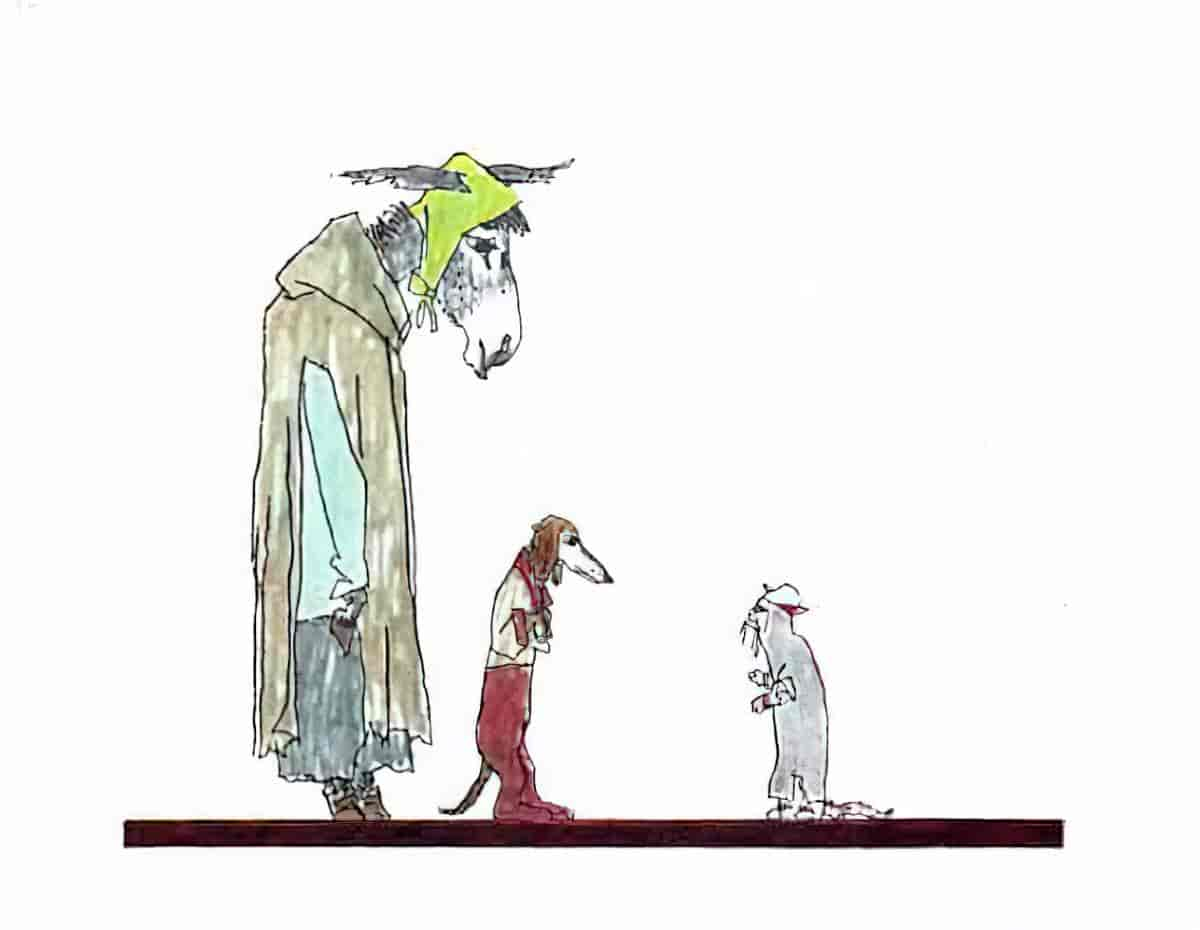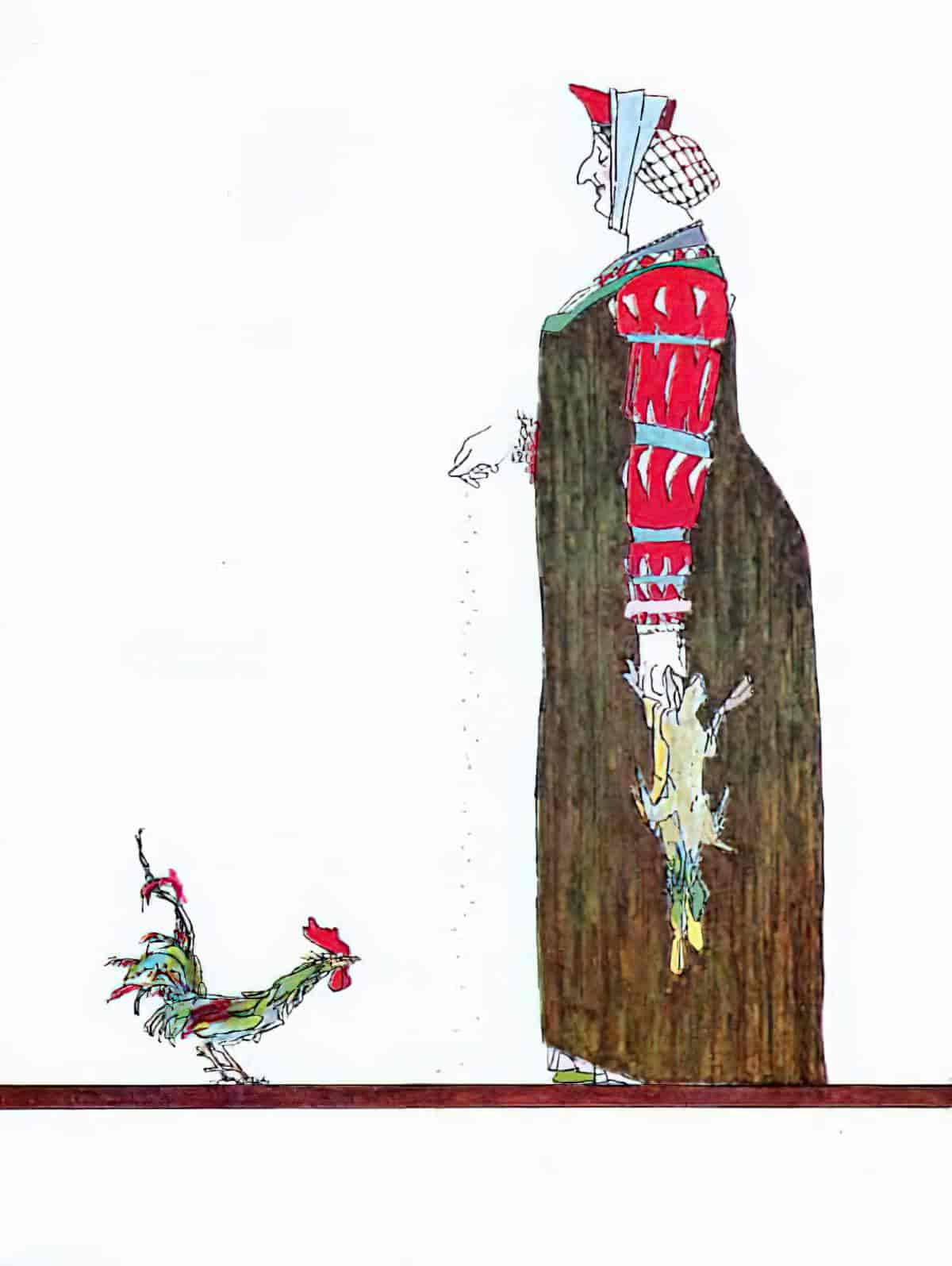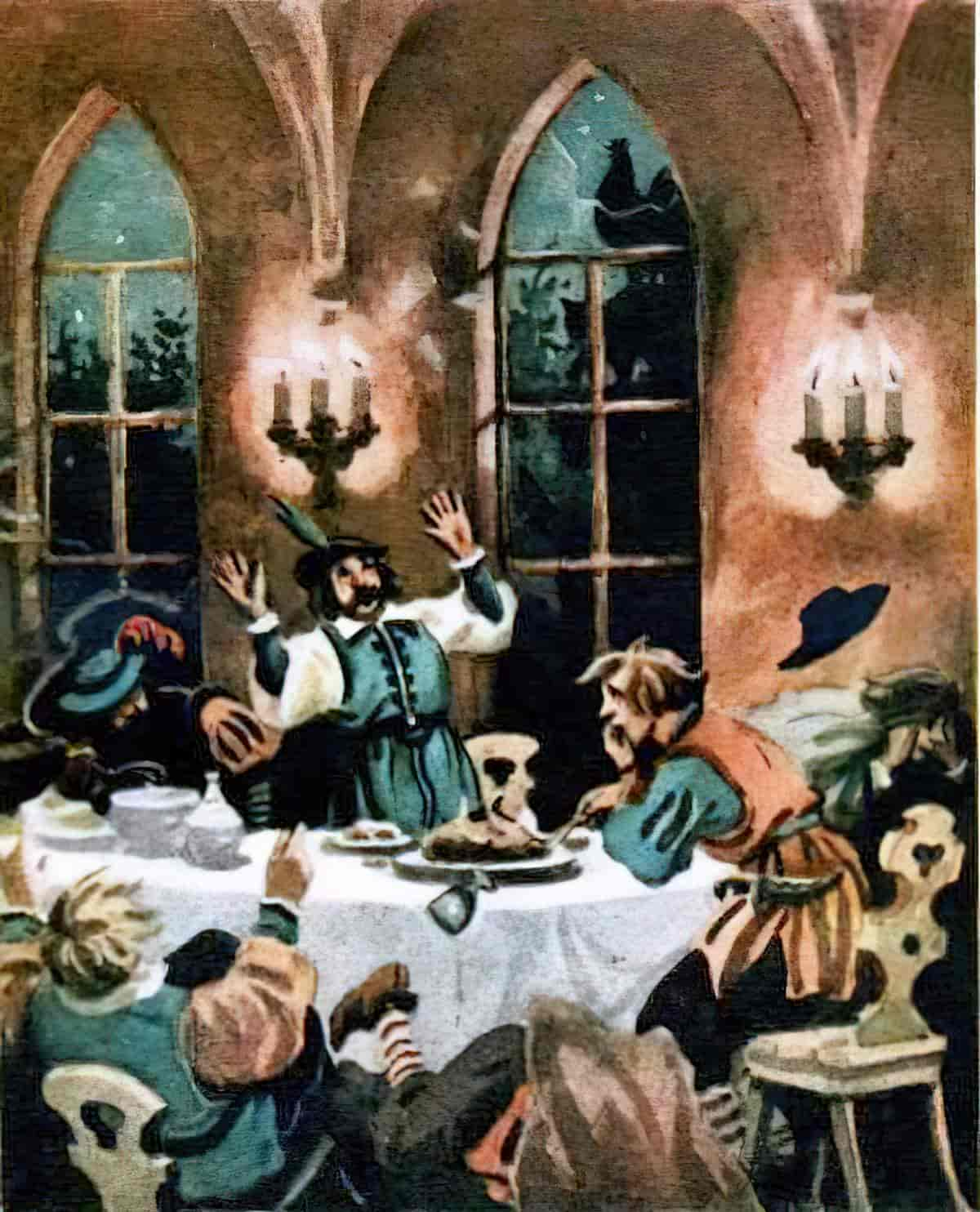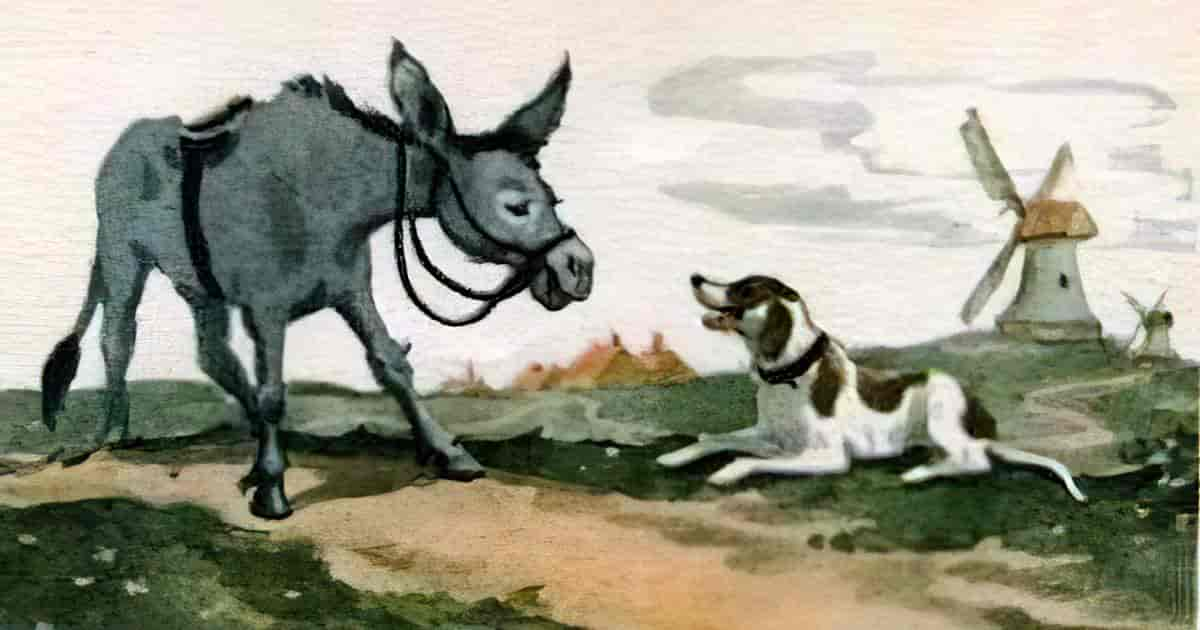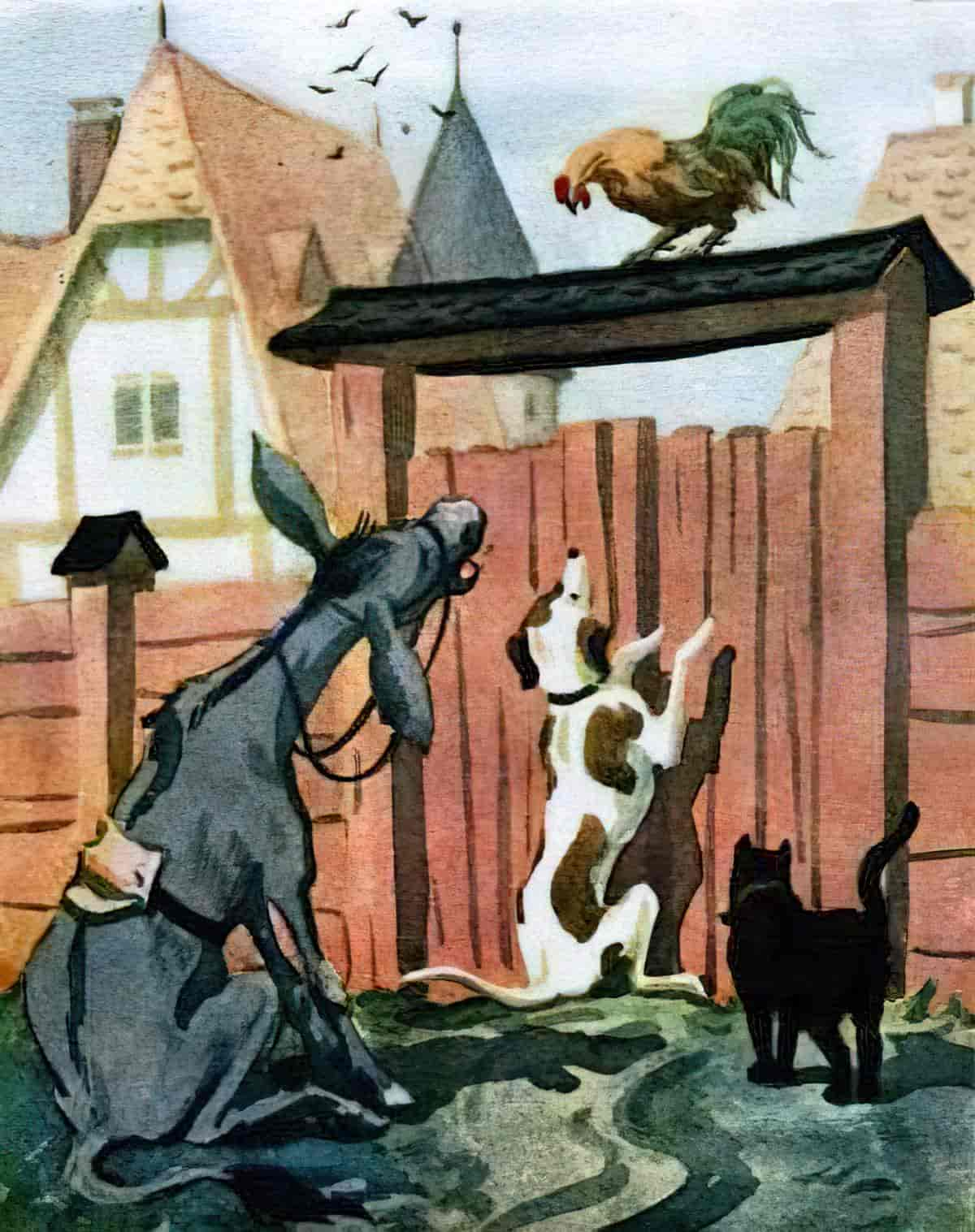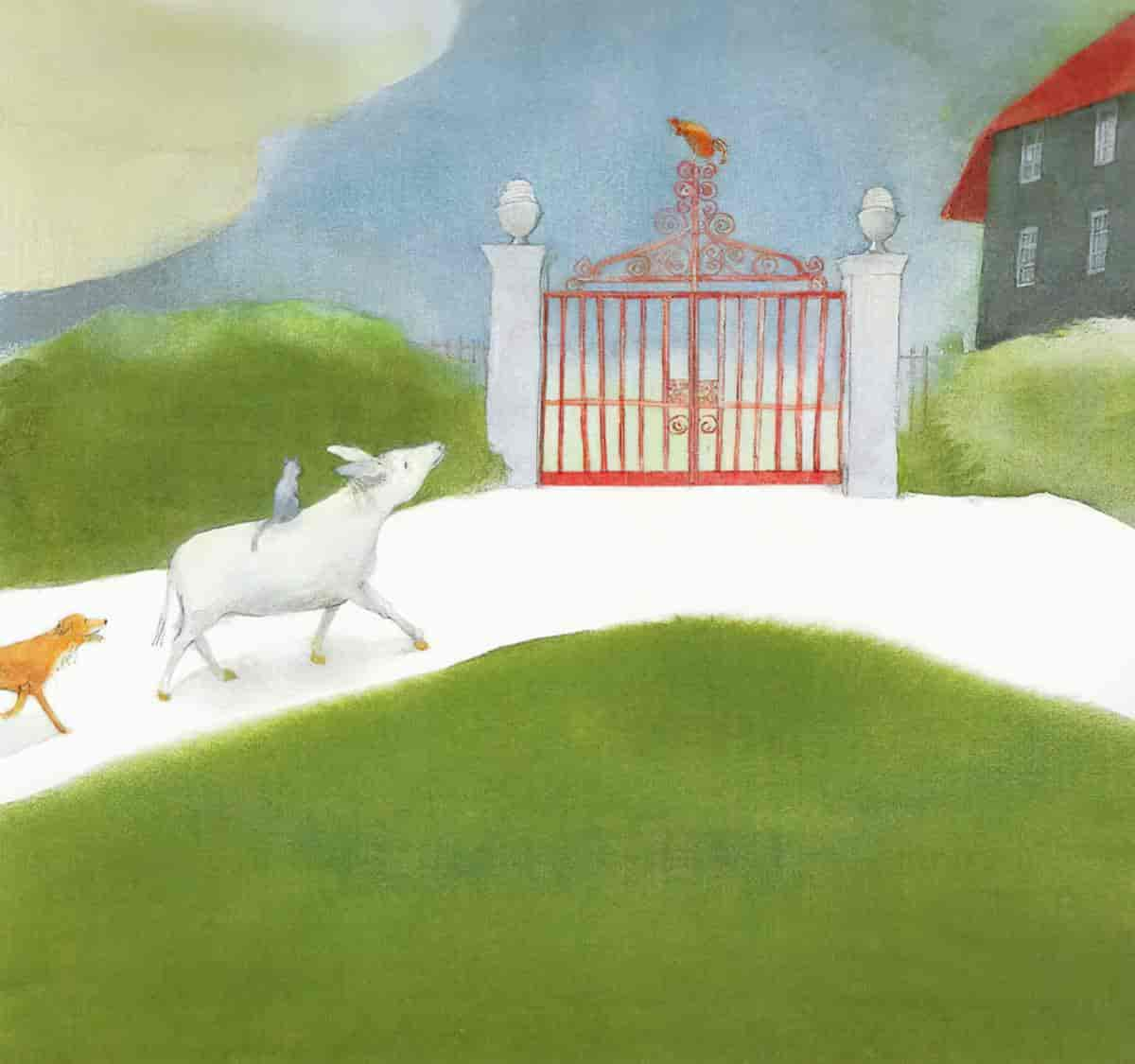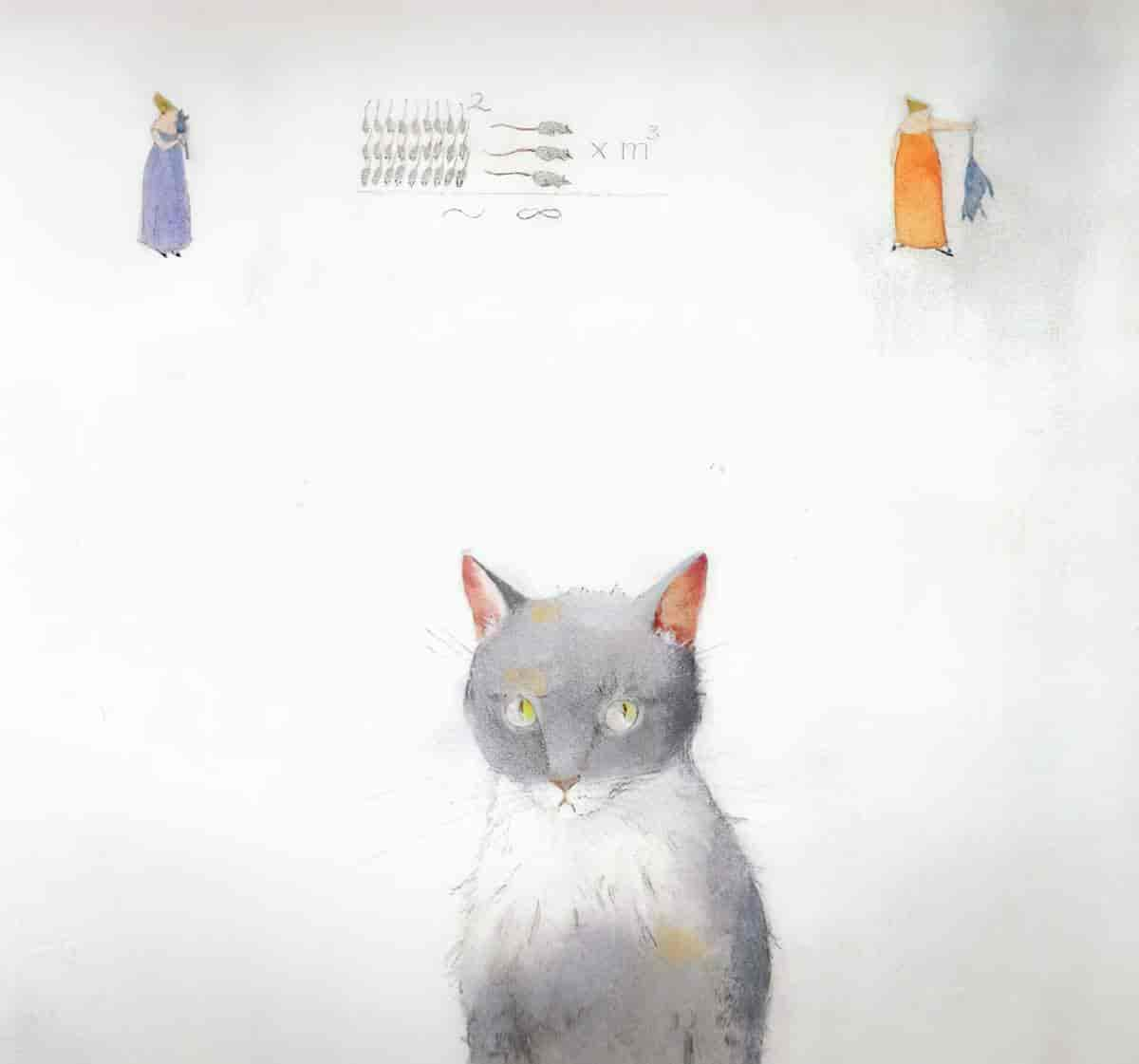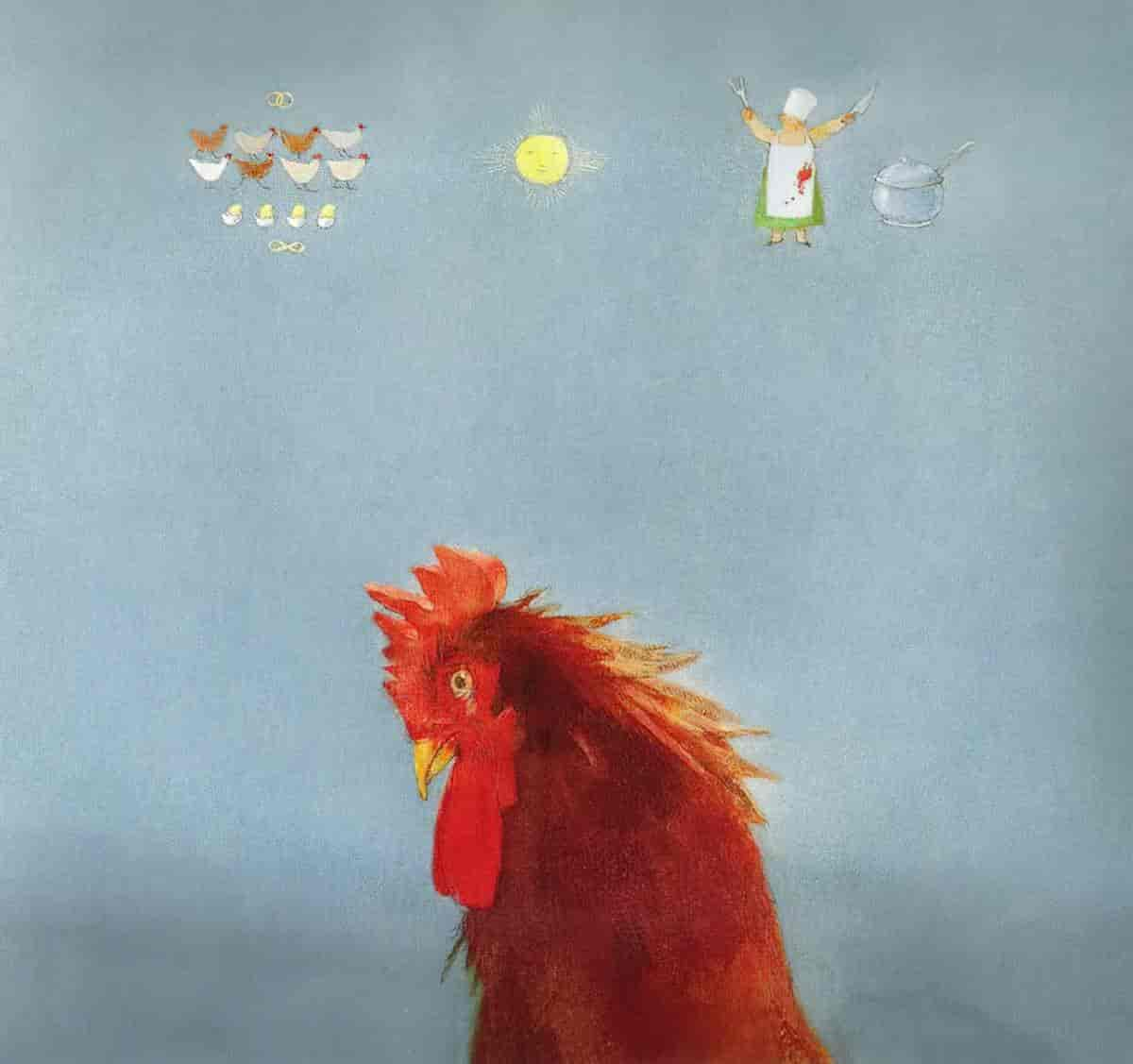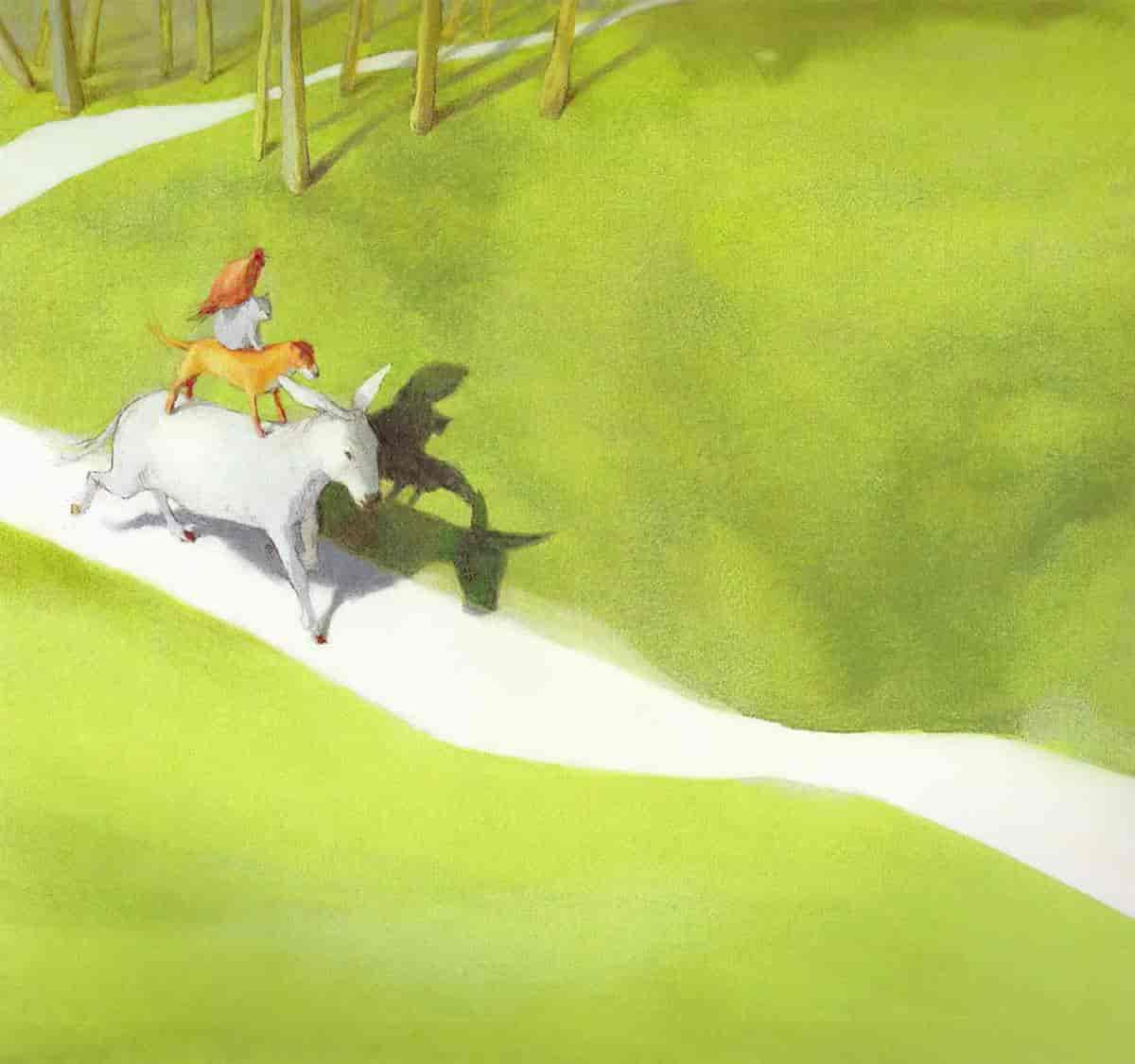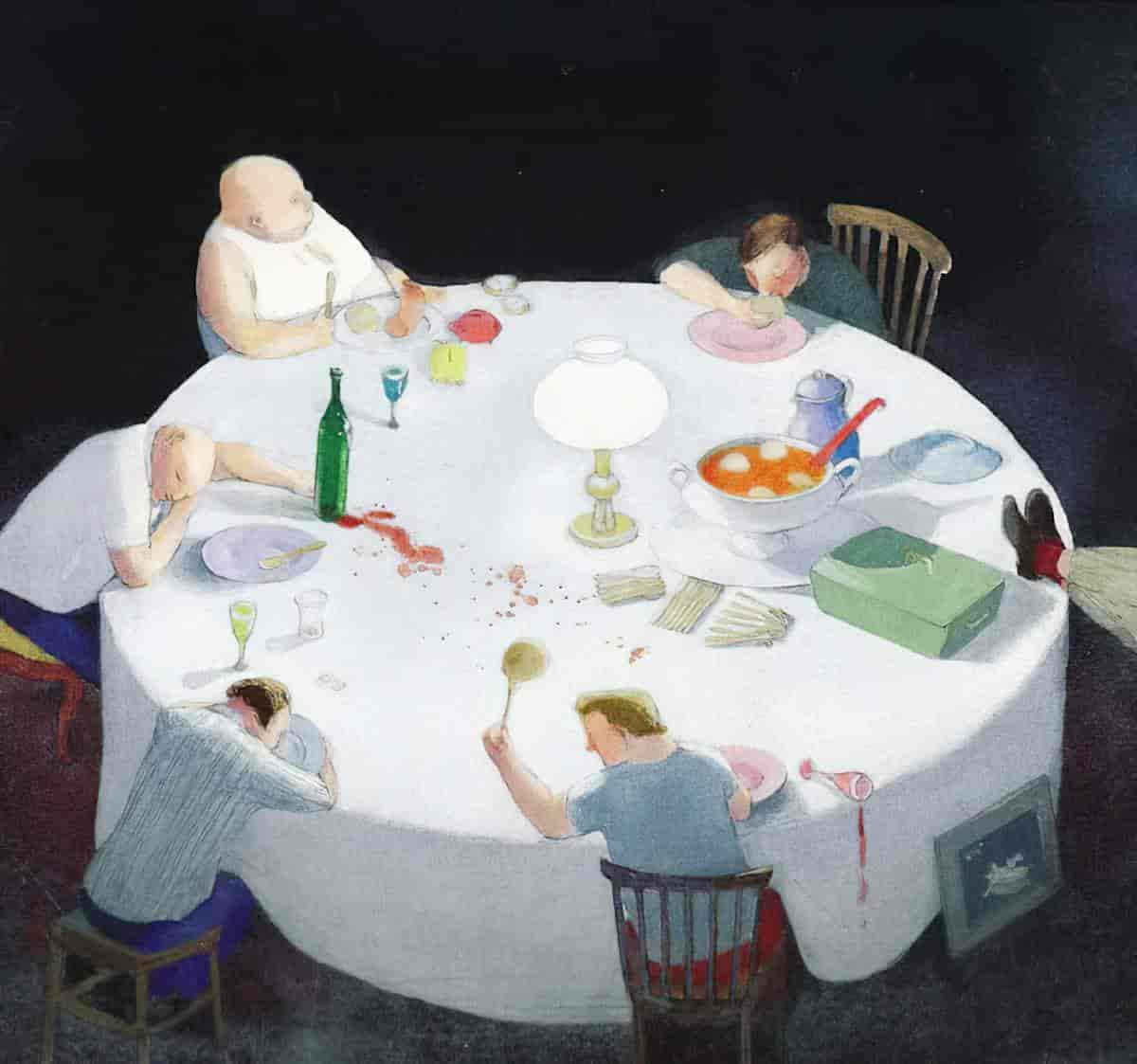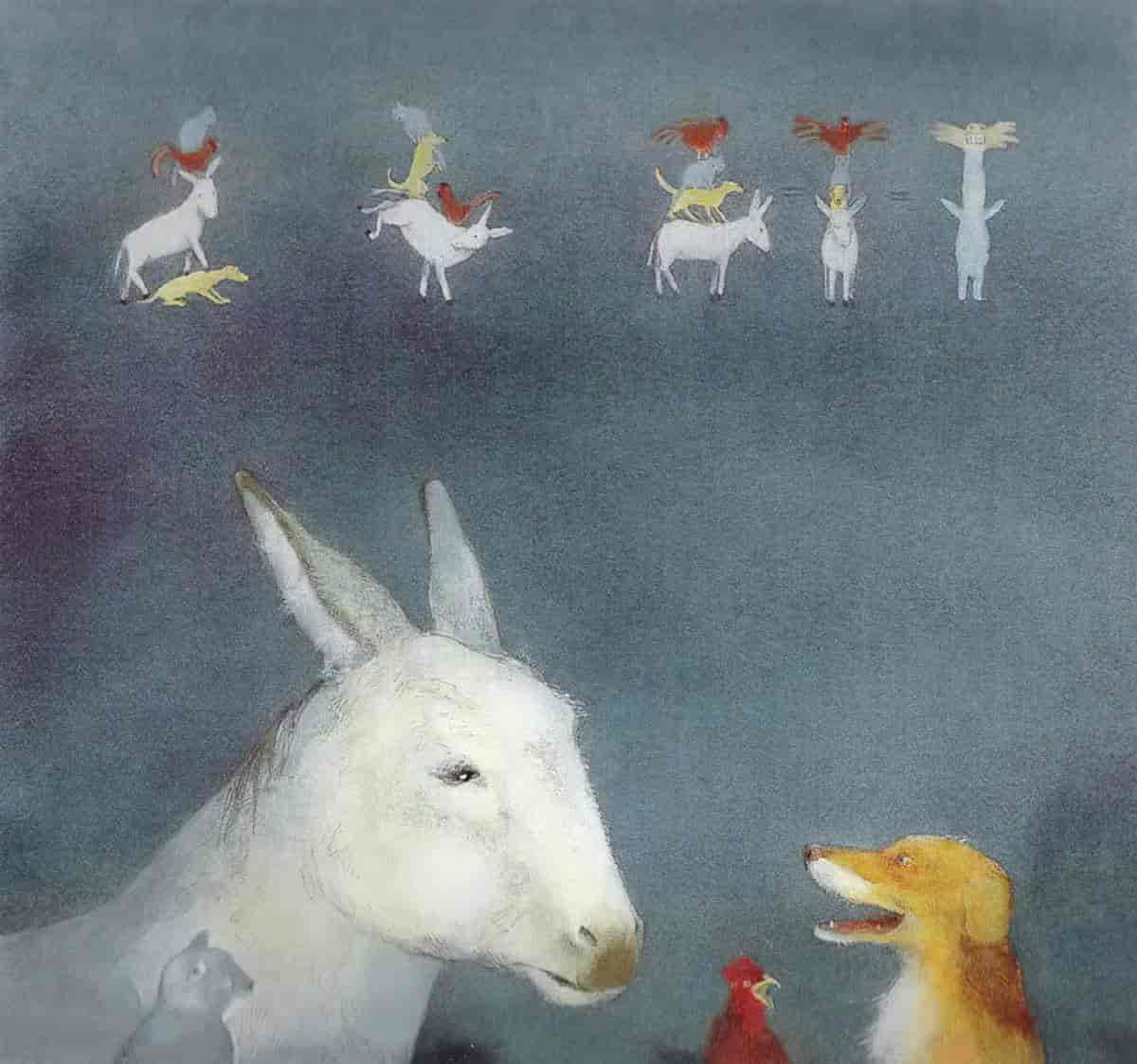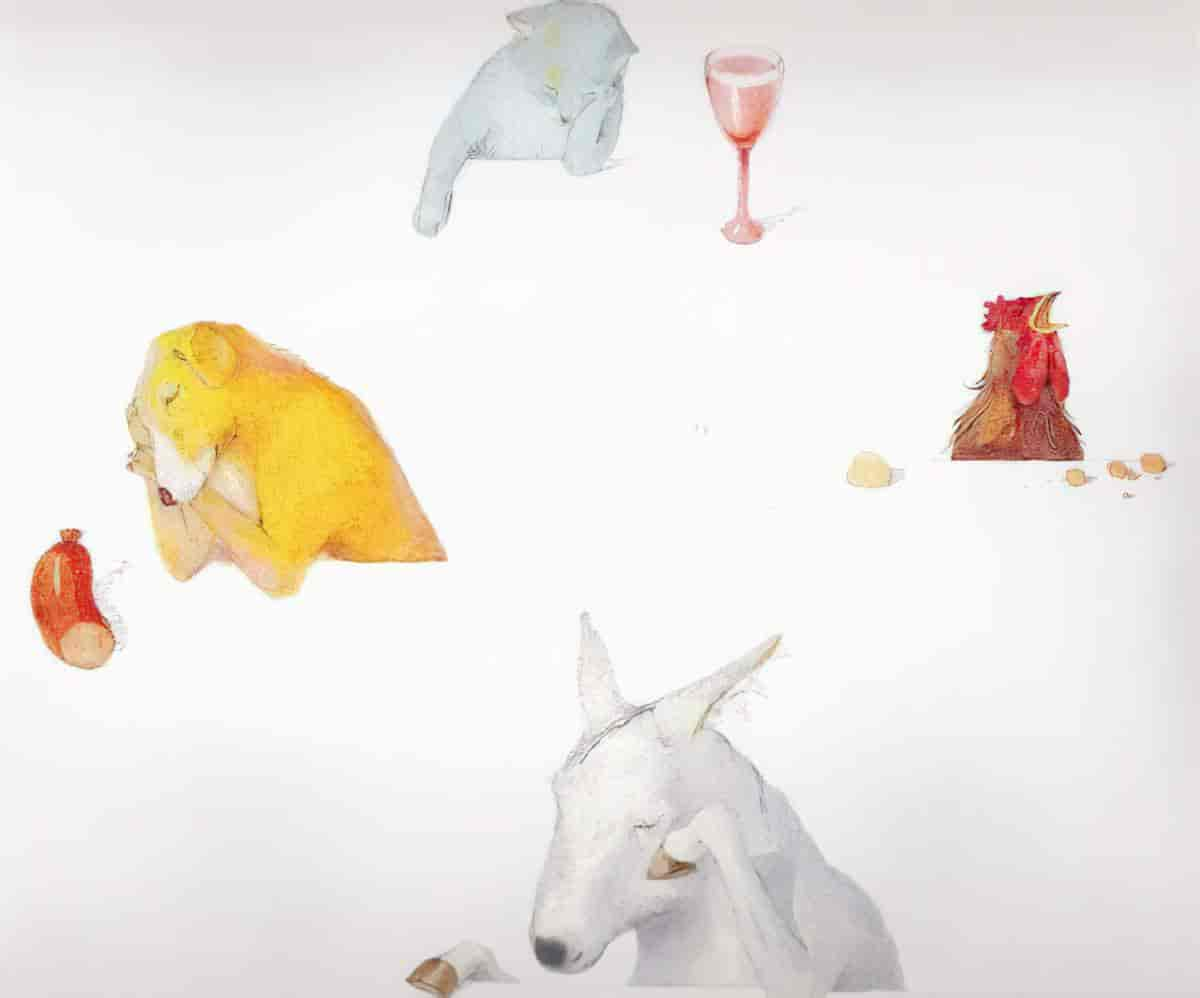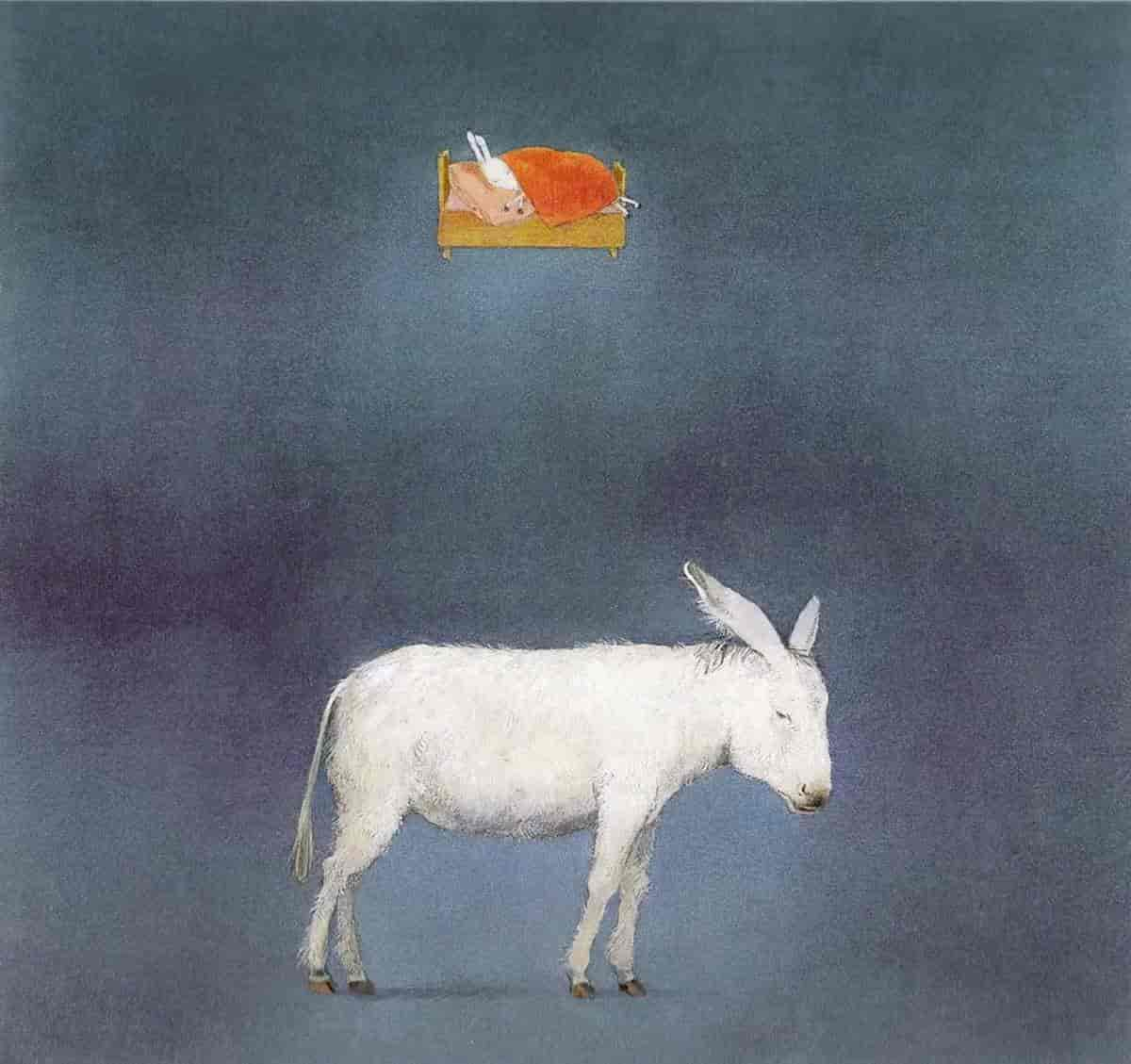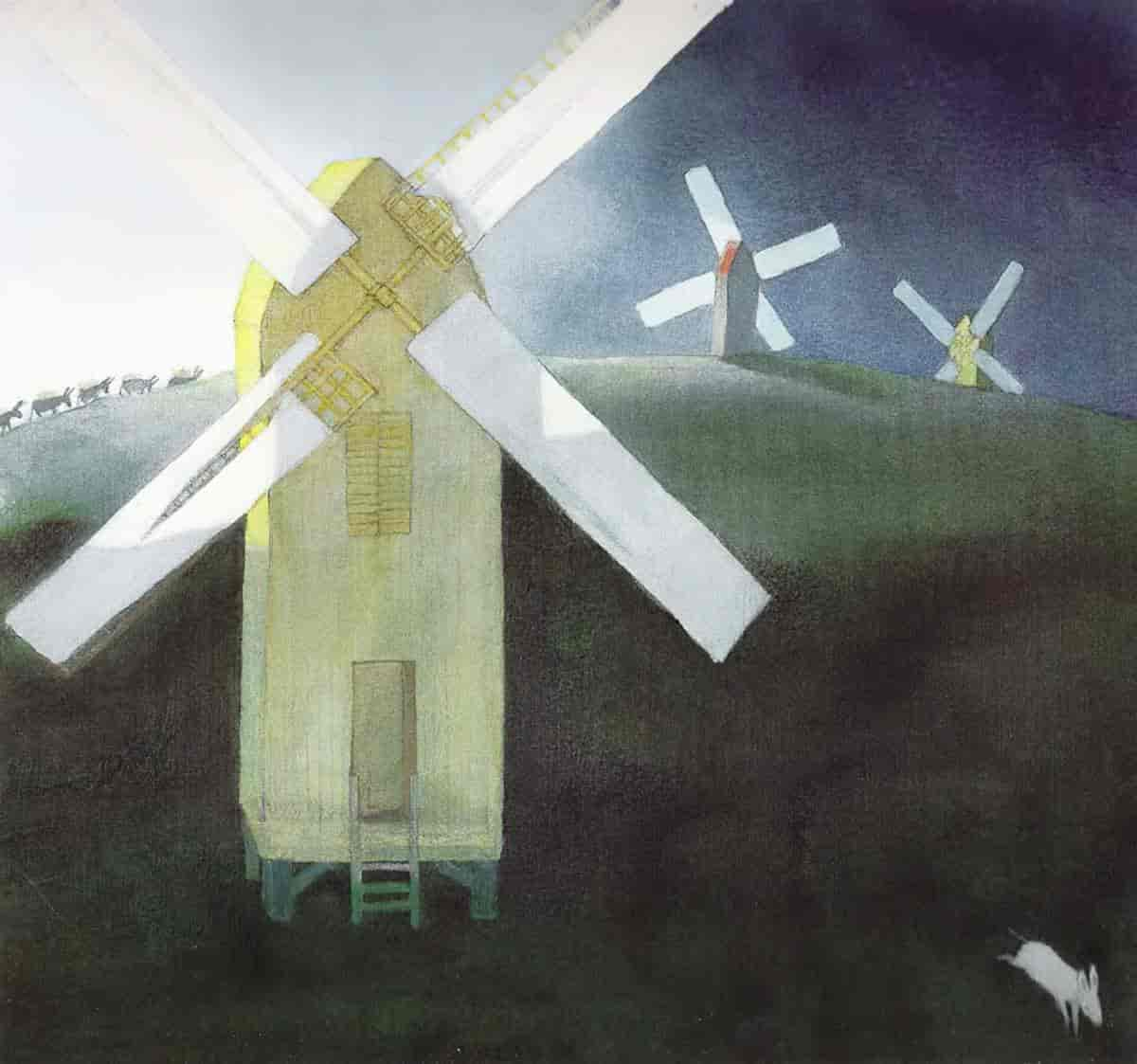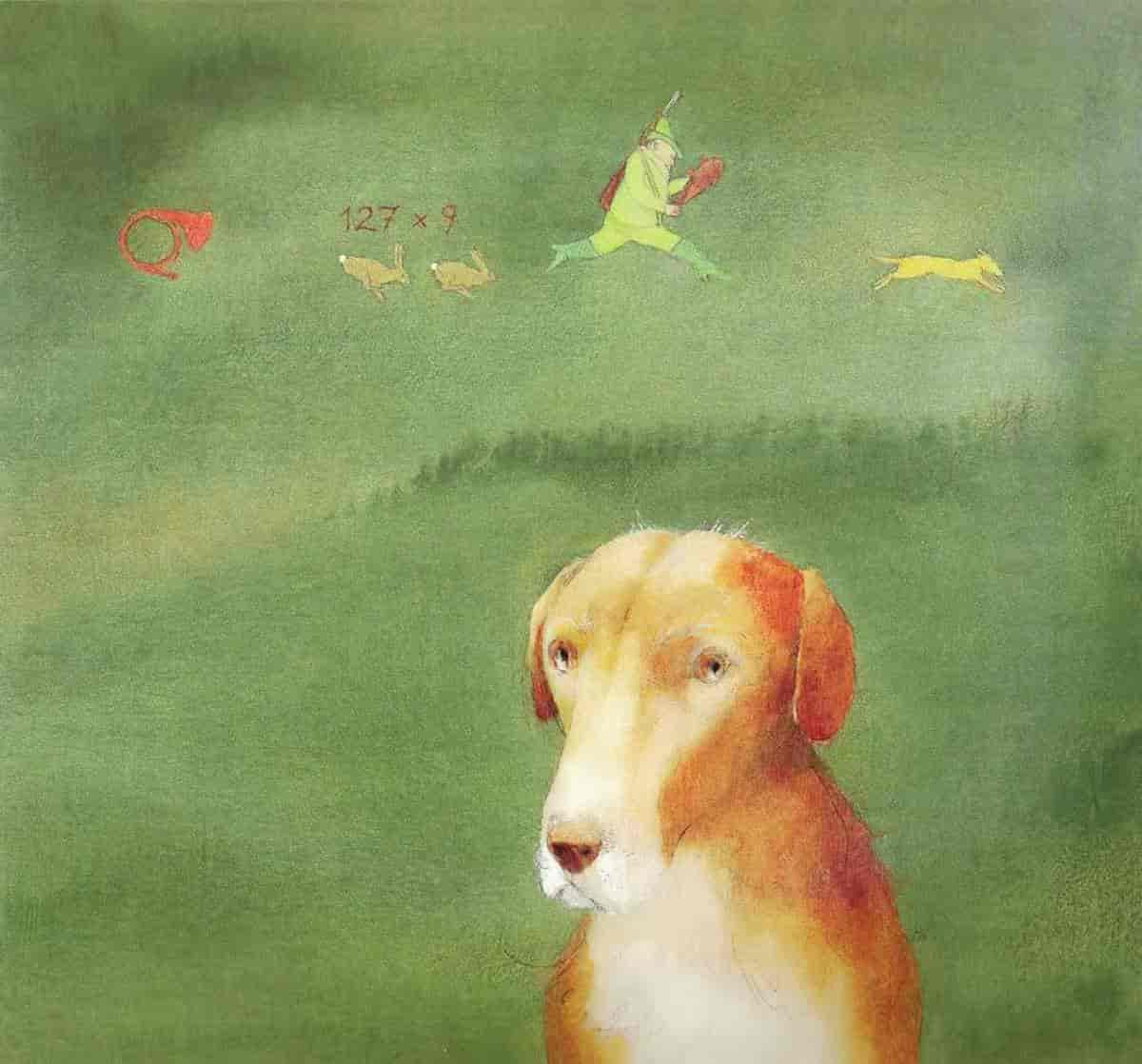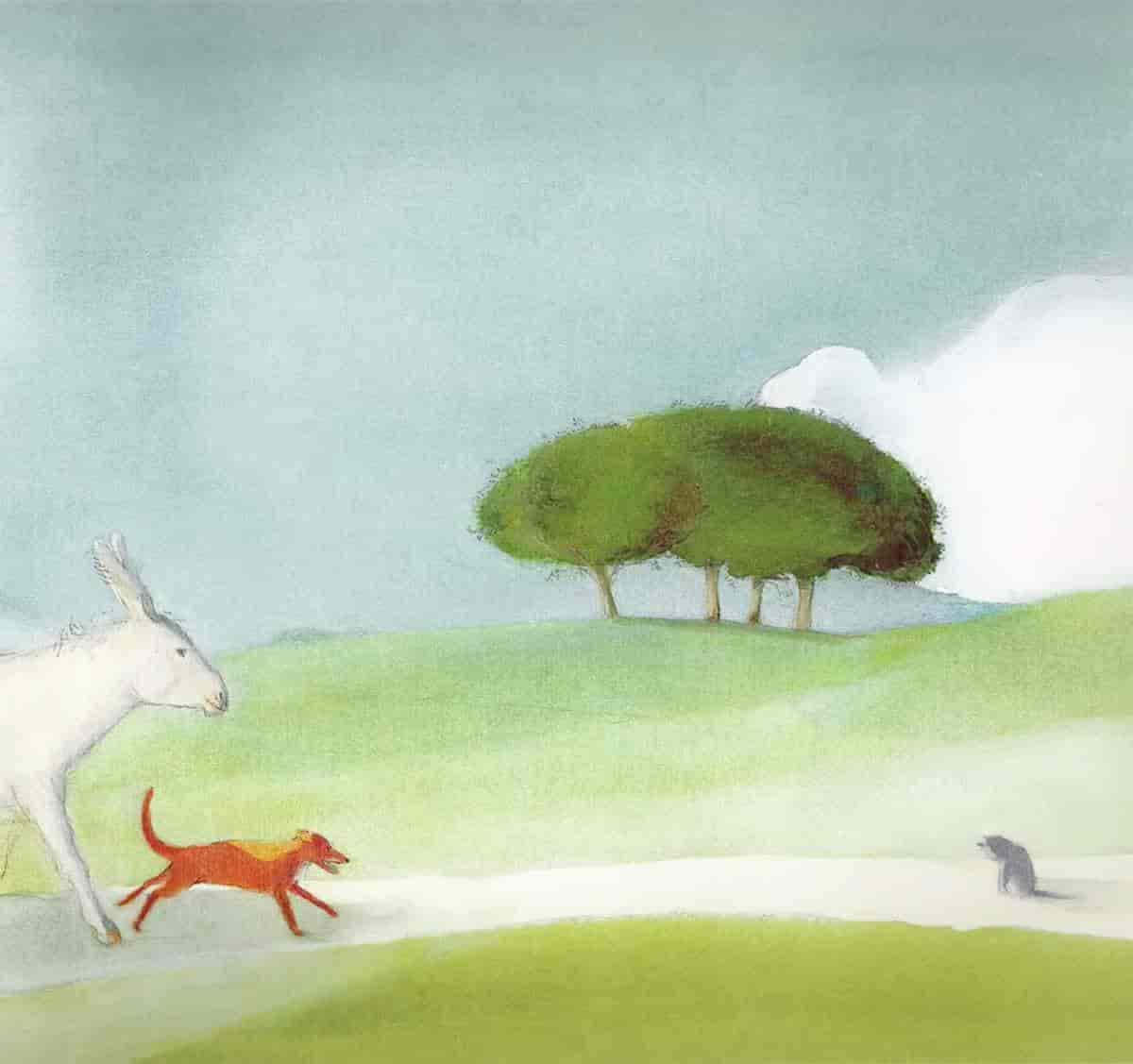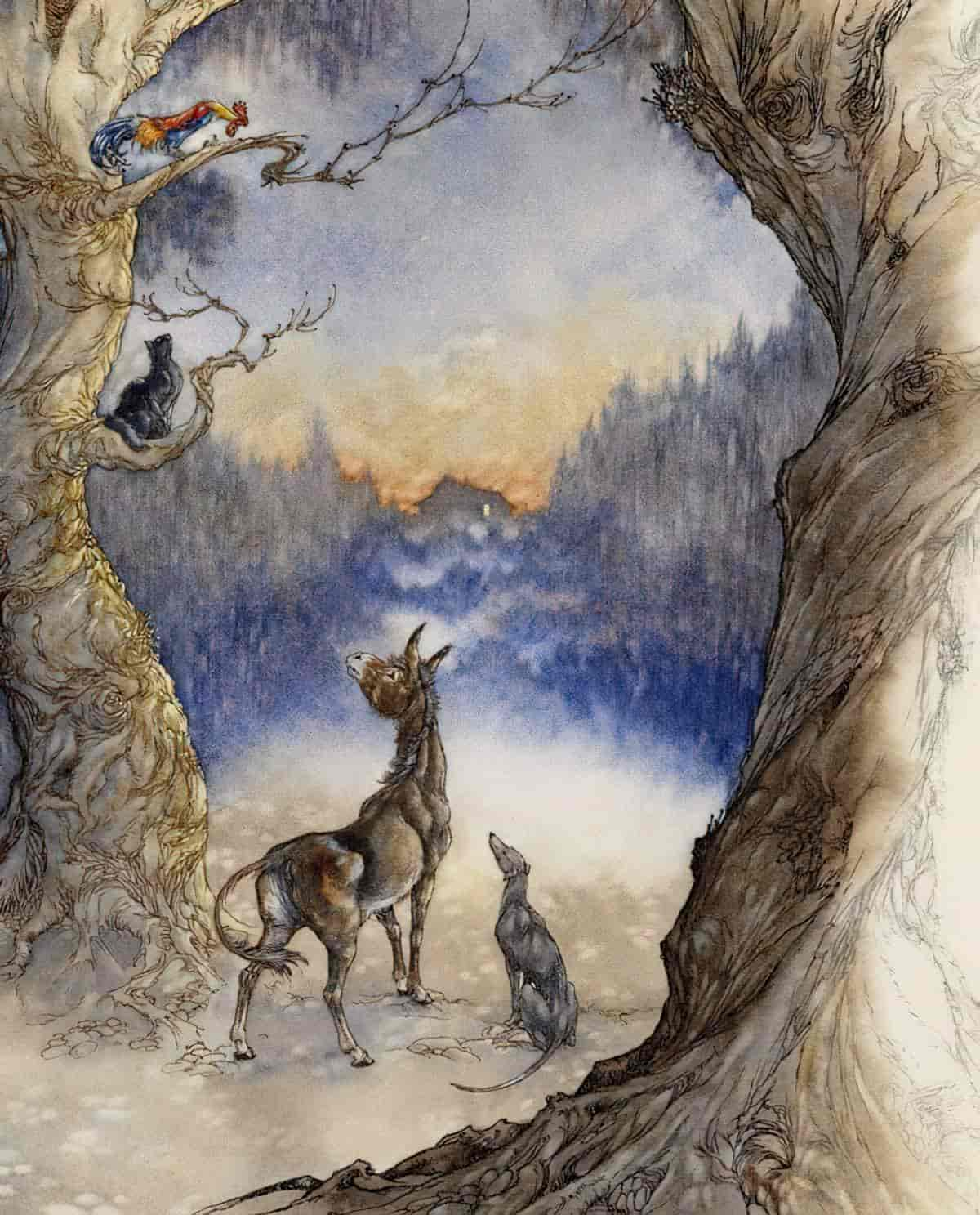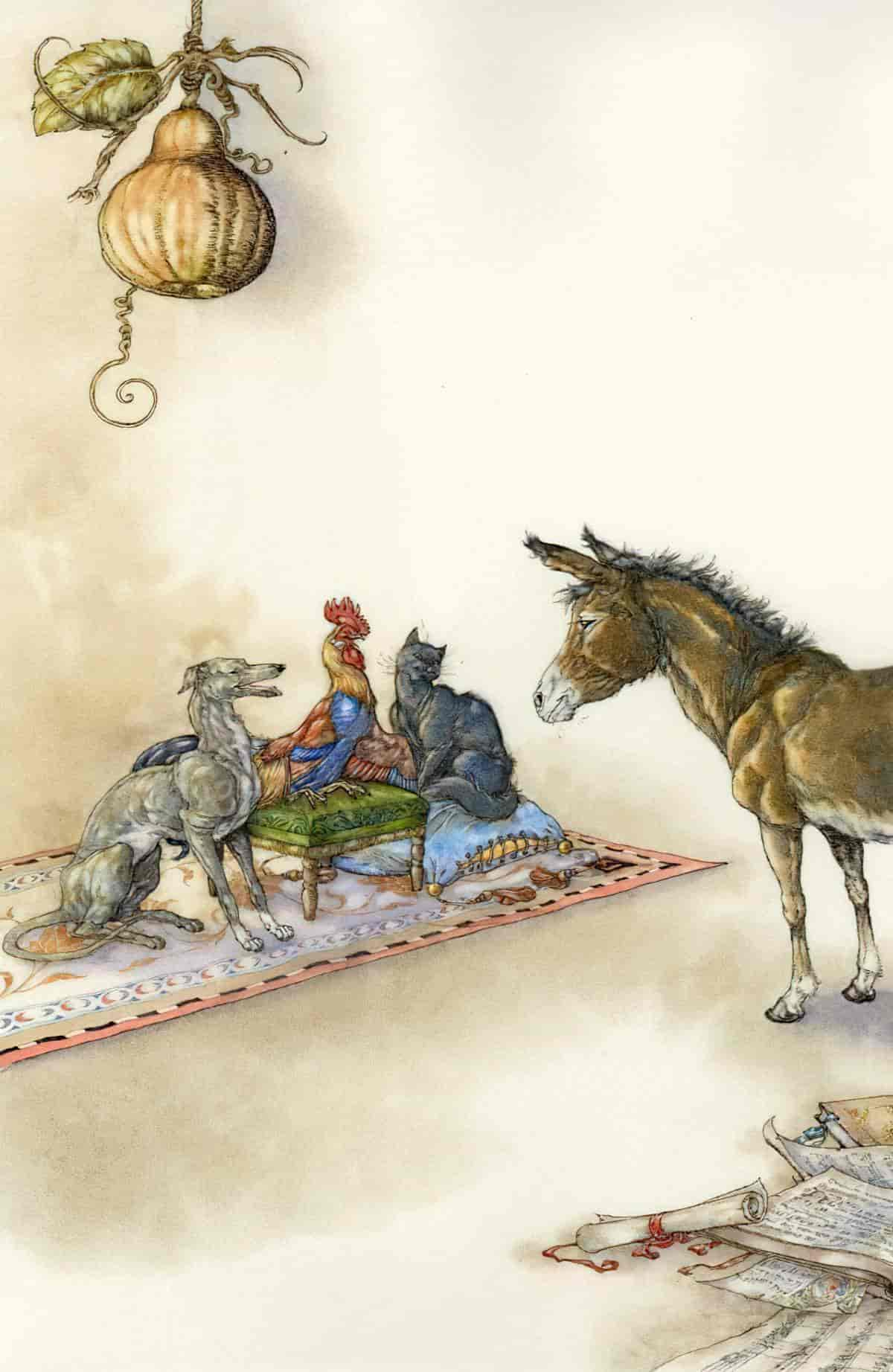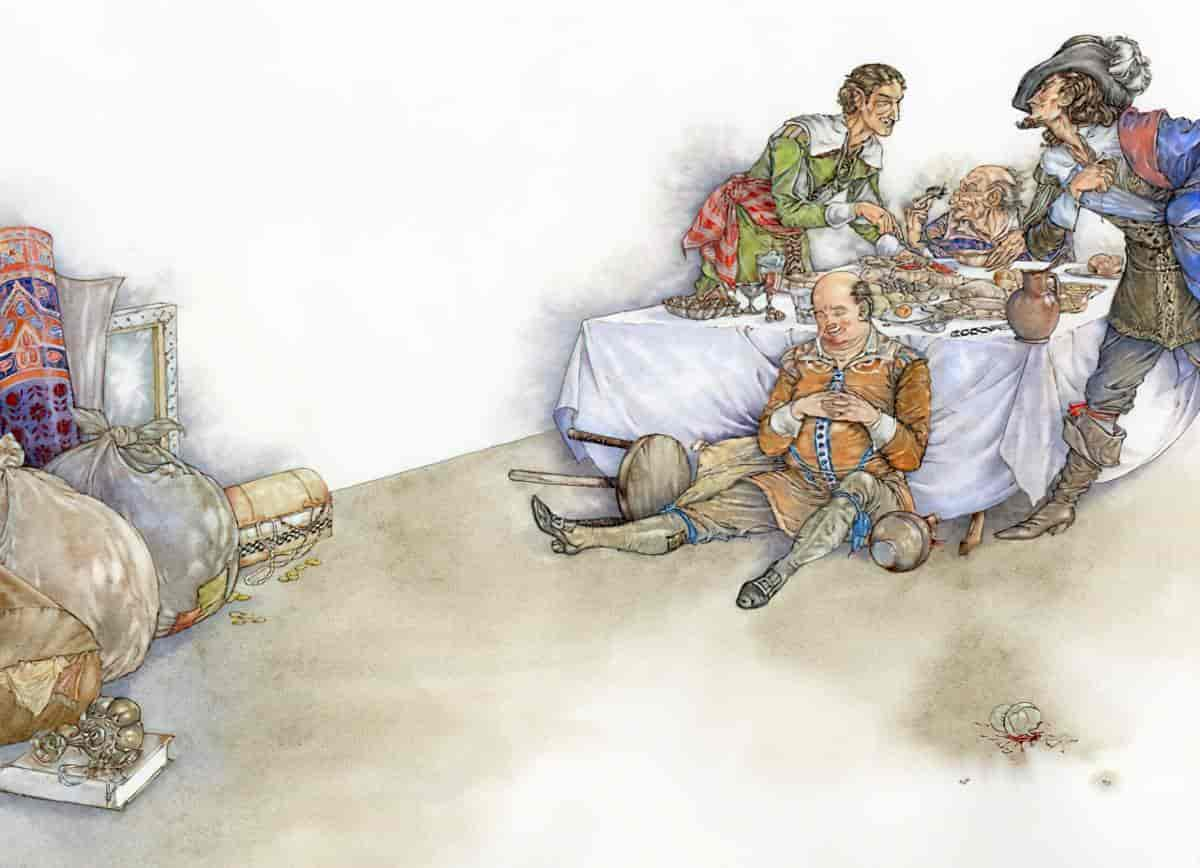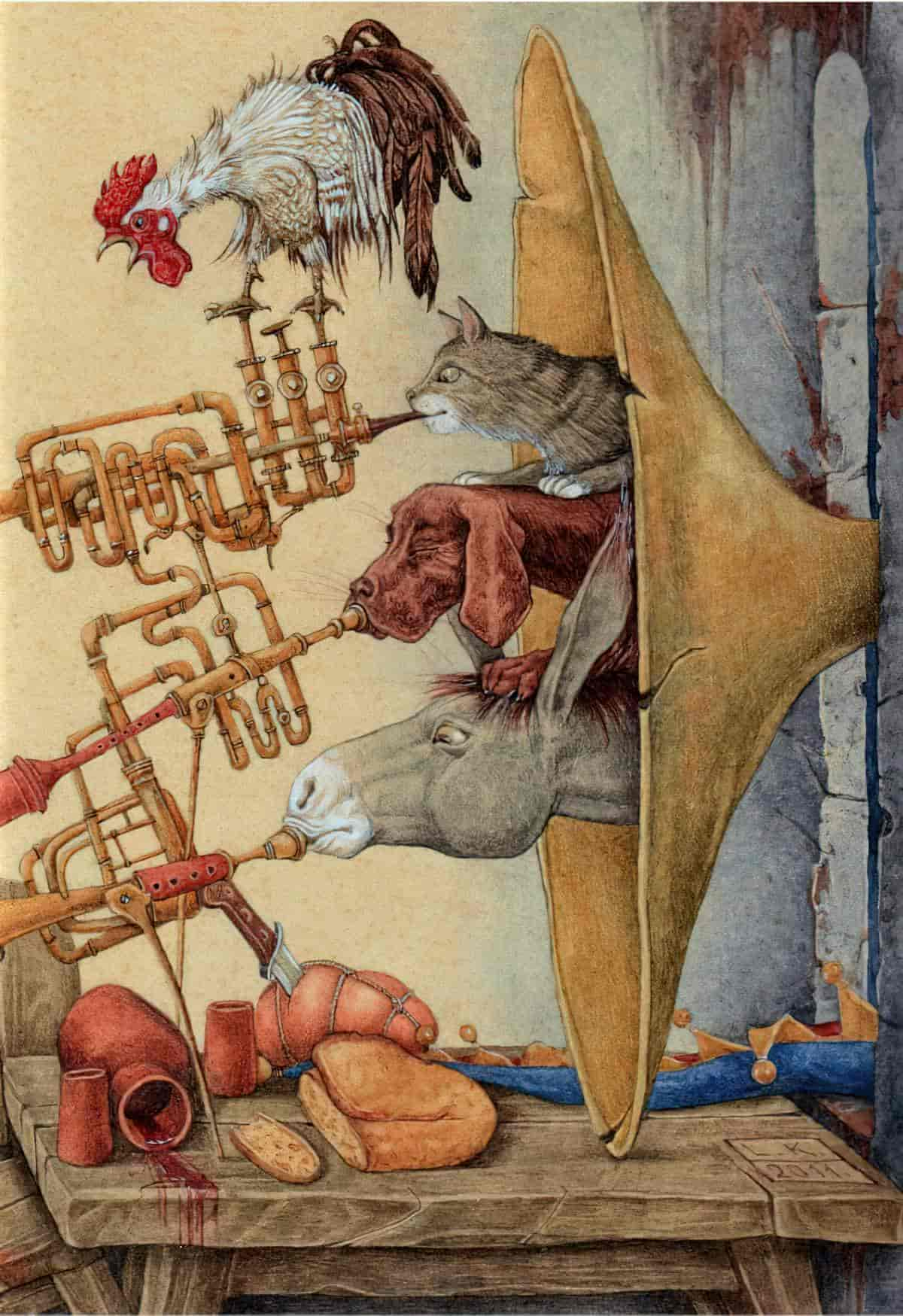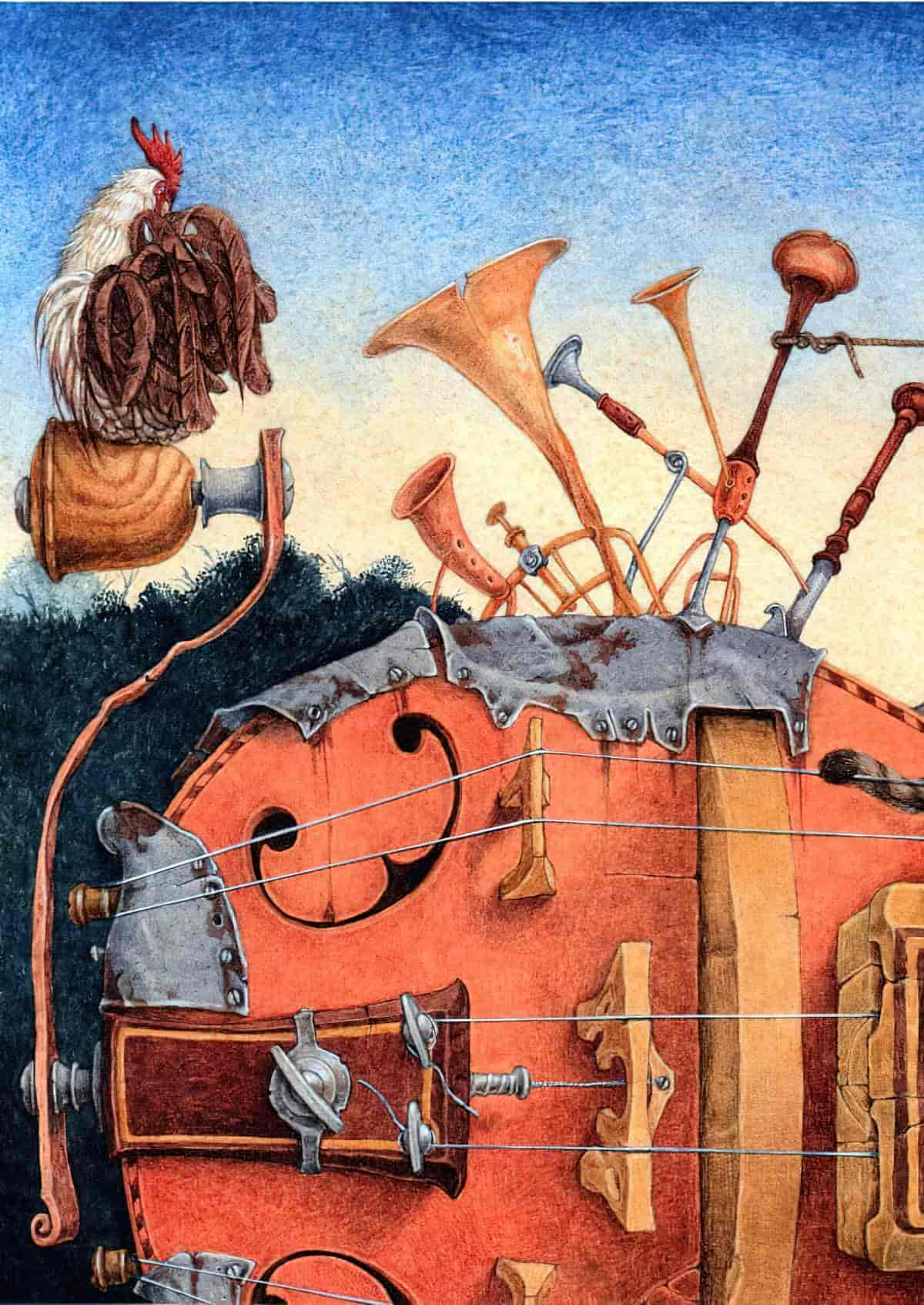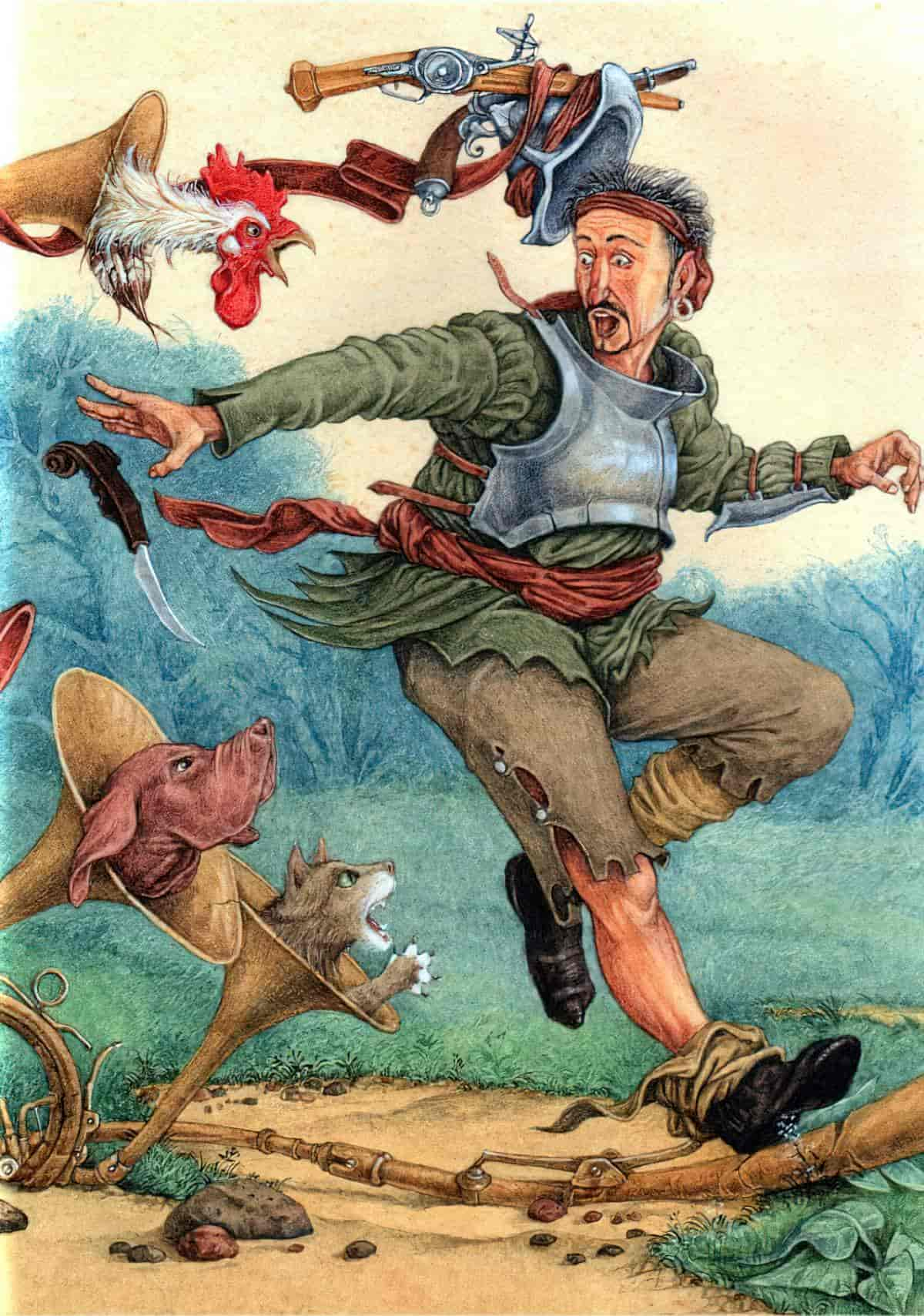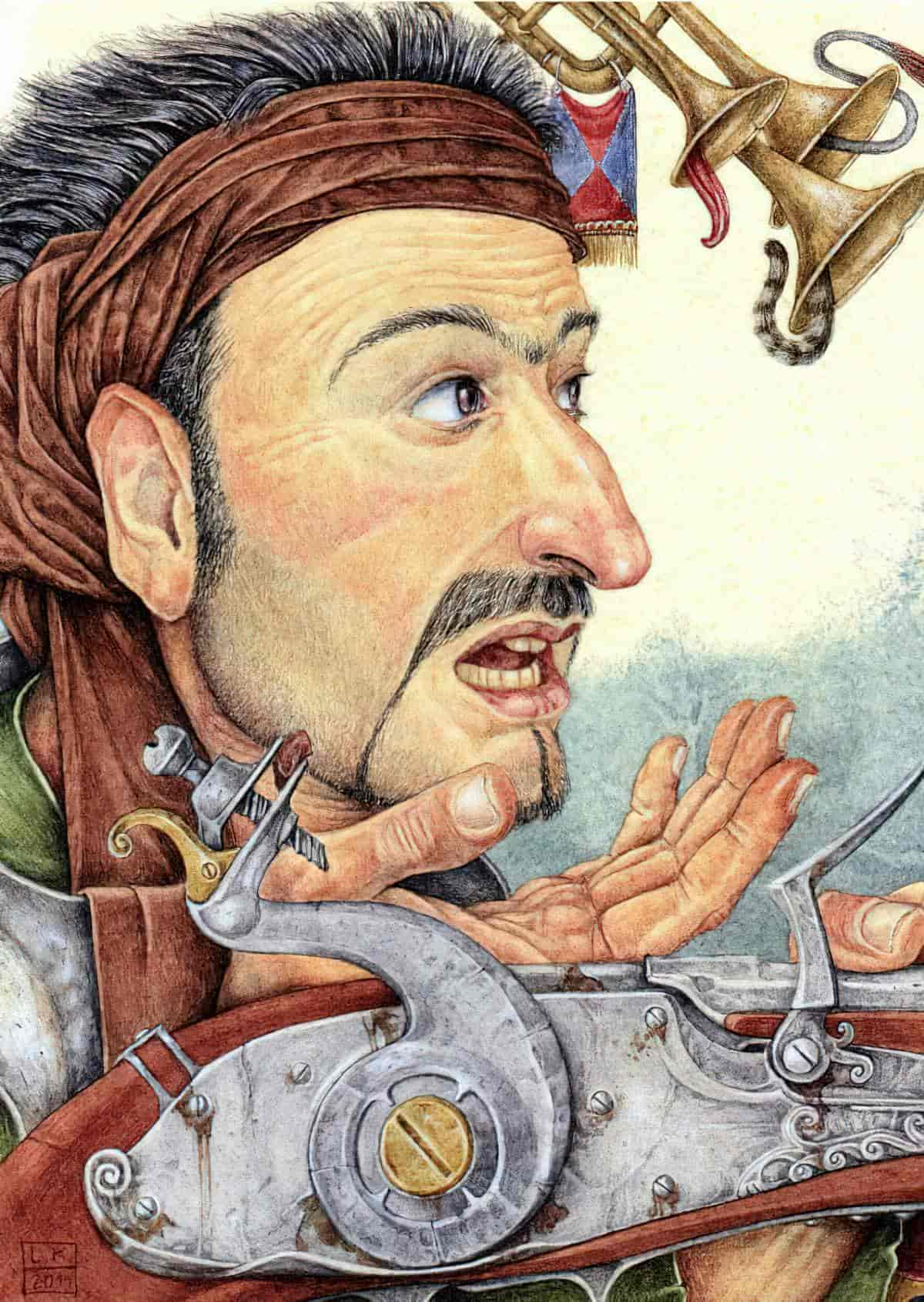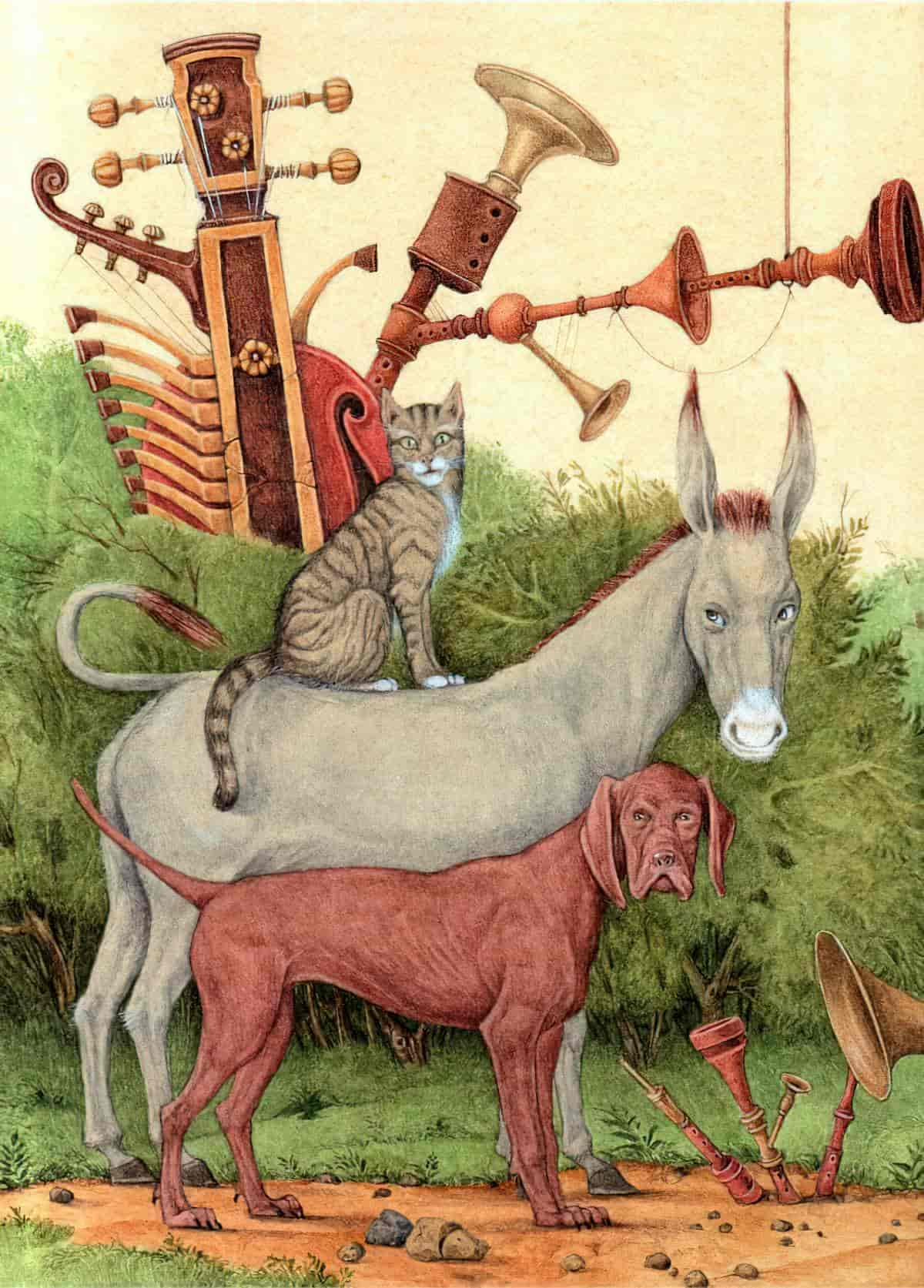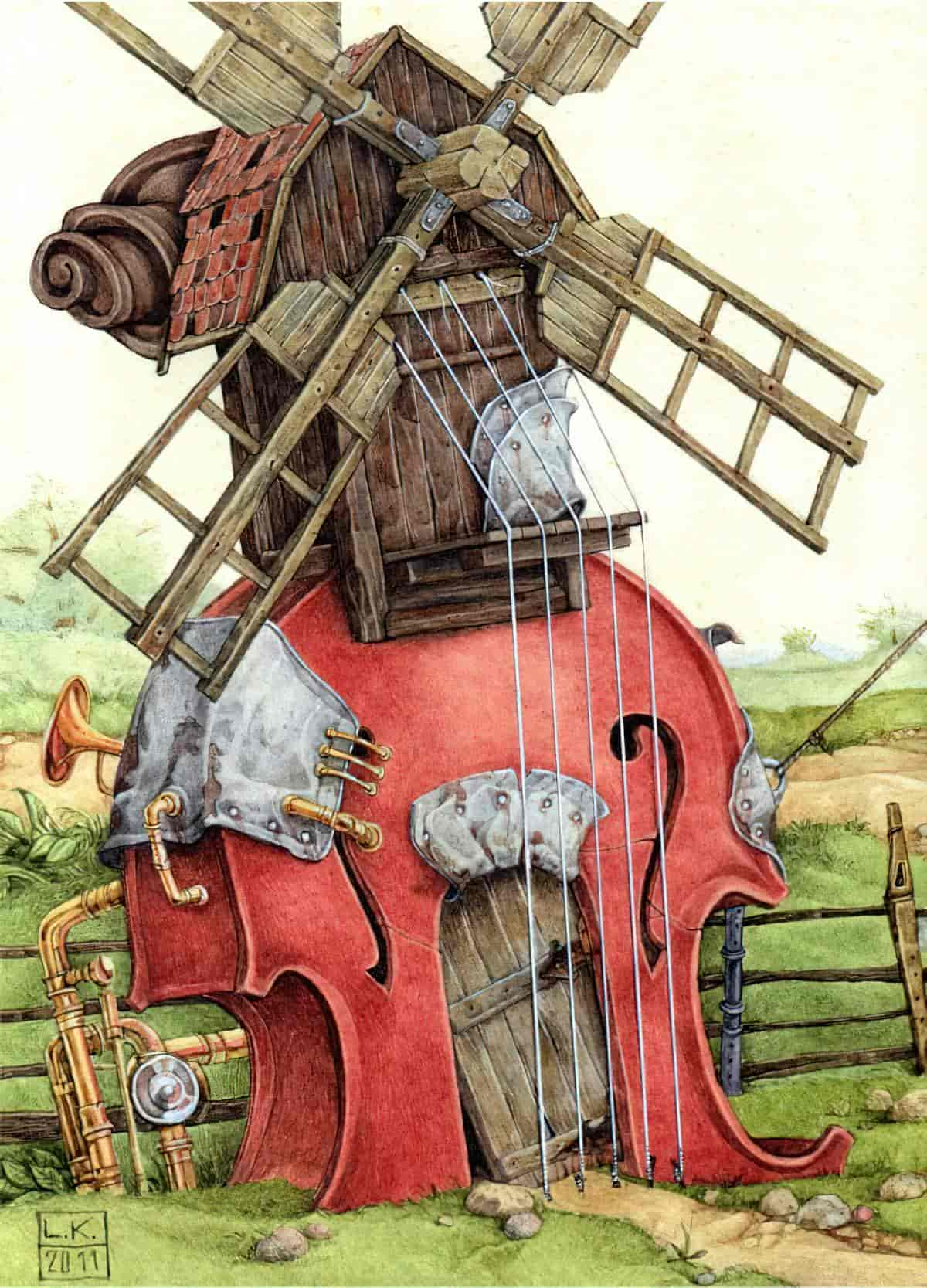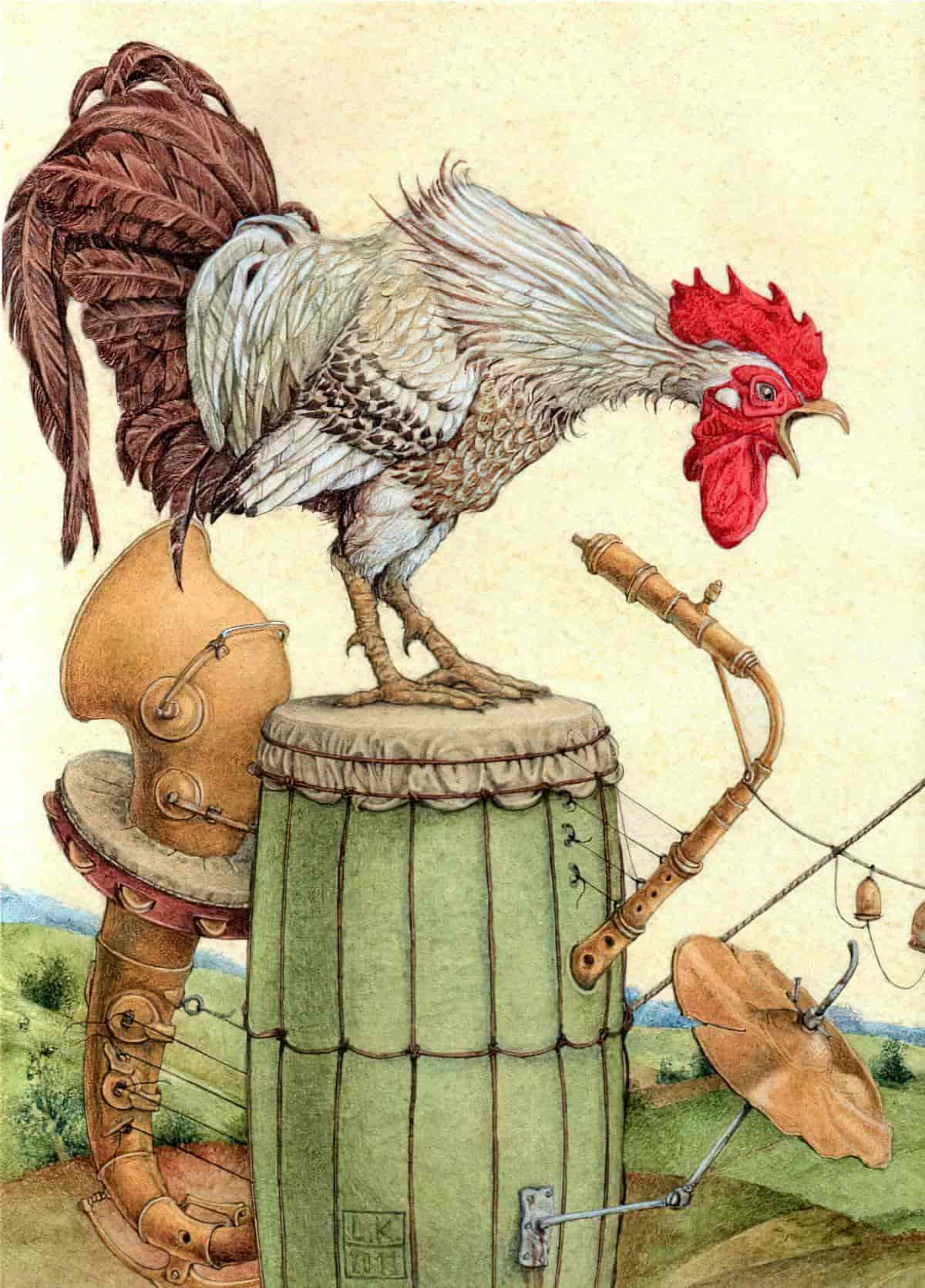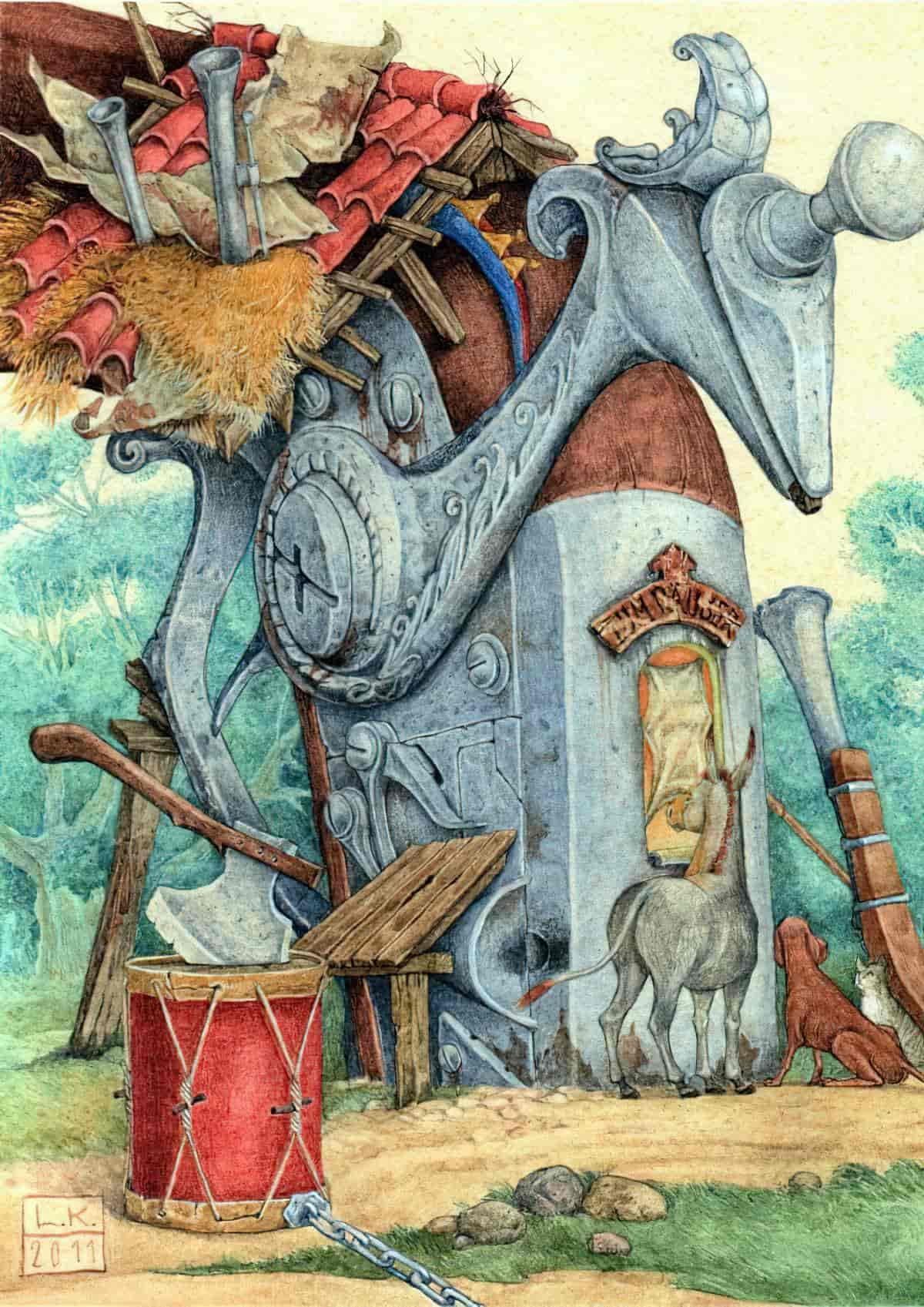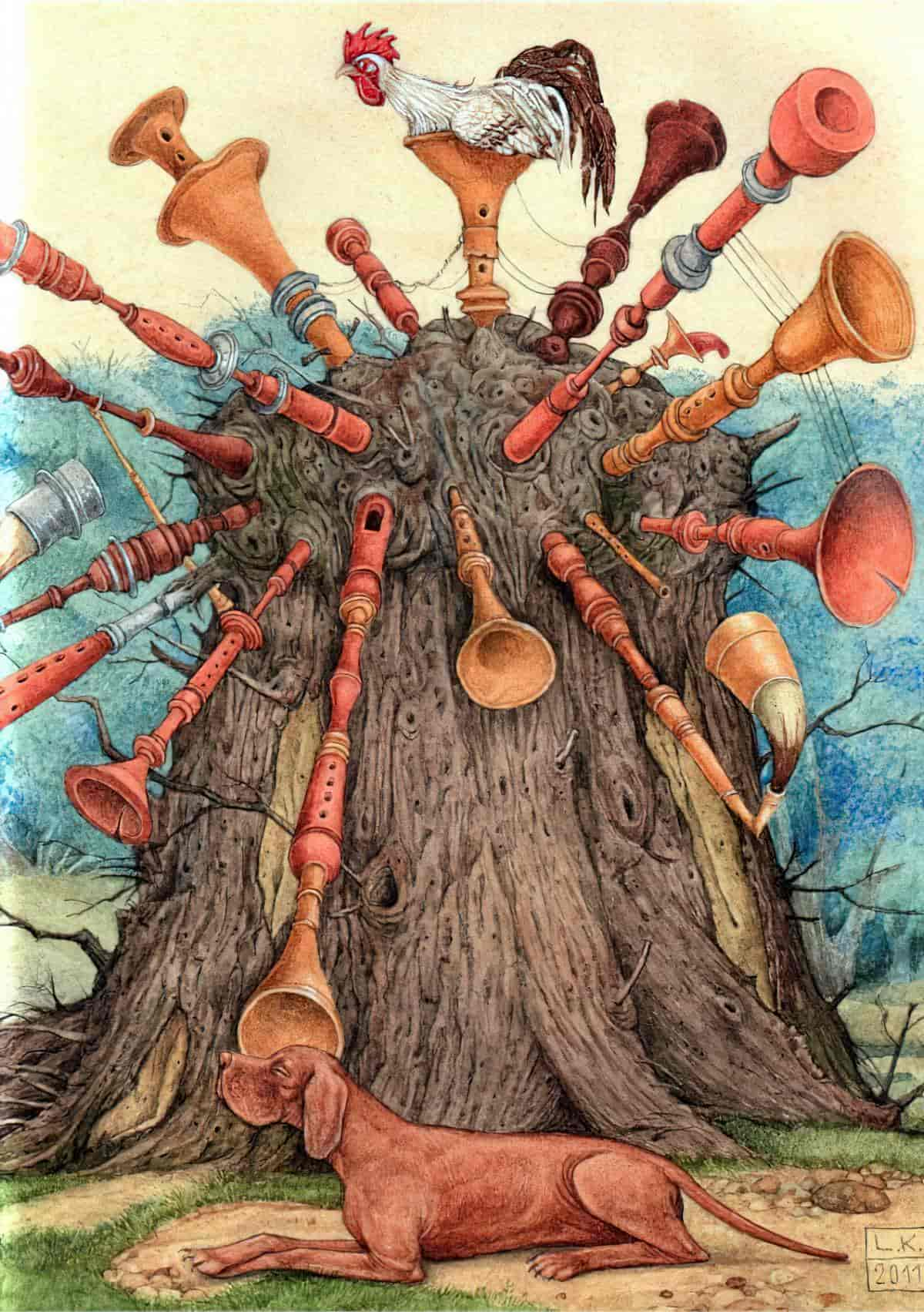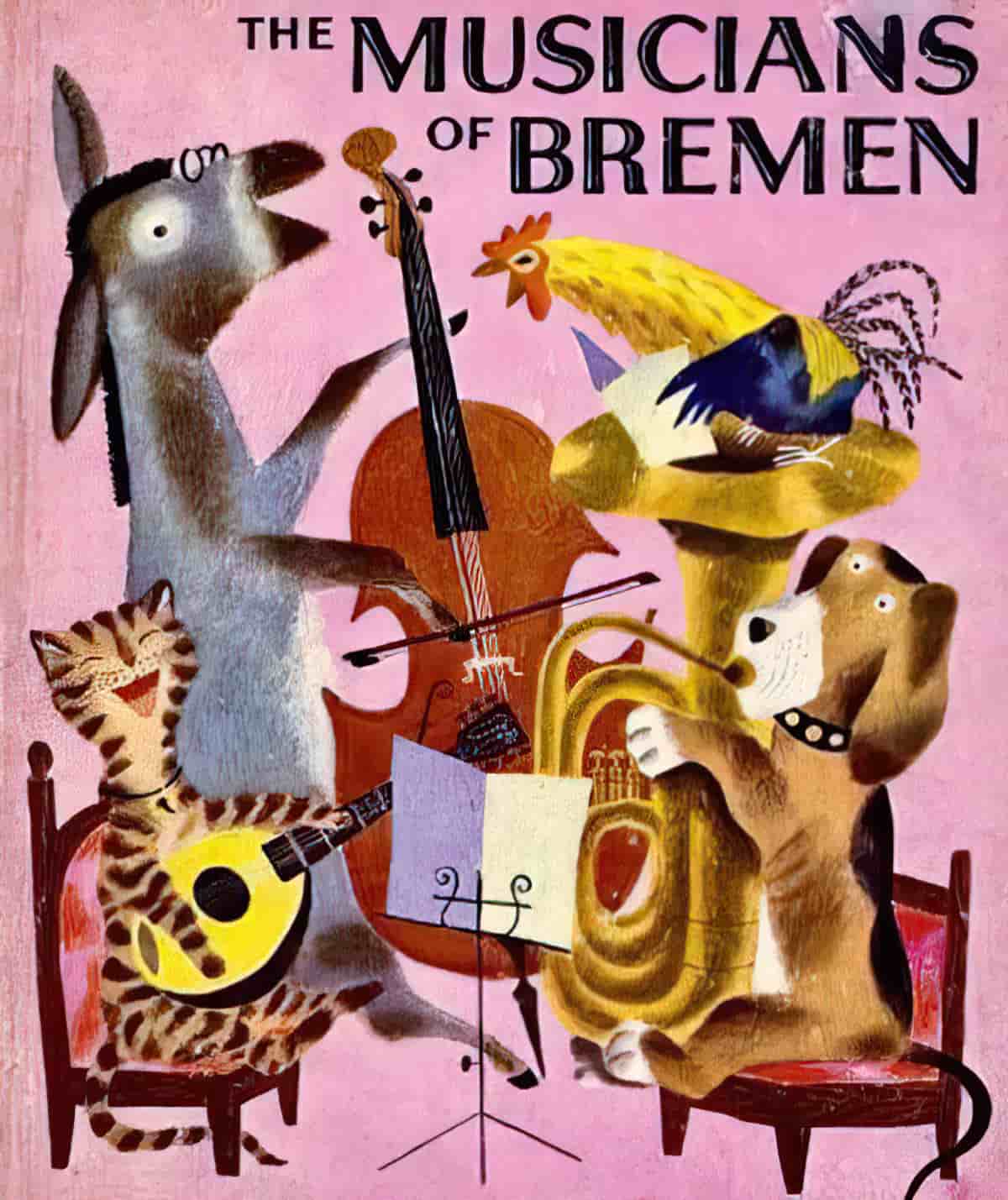“The Town Musicians Of Bremen” is a folktale that goes by various similar names. Its plot structure is so strong that many storytellers writing series for children borrow this story at some point.
The “Town Musicians of Bremen” tells the story of four ageing domestic animals, who after a lifetime of hard work are neglected and mistreated by their former masters. Eventually, they decide to run away and become town musicians in the city of Bremen. Contrary to the story’s title the characters never arrive in Bremen, as they succeed in tricking and scaring off a band of robbers, capturing their spoils, and moving into their house. “The Town Musicians of Bremen” is a story of Aarne–Thompson Type 130 (“Outcast animals find a new home”).
Wikipedia
I like the art in the version below, based on the scarier (non-bowdlerised) story collected by the Brothers Grimm.
SETTING OF “THE TOWN MUSICIANS OF BREMEN”
The significant thing about Bremen: It’s a large, populated city where one might possibly make a living by performing in front of a crowd. The donkey is certainly romanticising the city, which is an ironic inversion. In most stories with a rural/city divide, the city is a treacherous place while the country is a pastoral haven.
Modern illustrators depict the animals of this story playing instruments on a stage, but I doubt that’s what earlier audiences would have imagined.
In earlier times, the story of the orphaned and homeless child who made money by playing a musical instrument was part of the popular imagination, if not actual reality. We see that reflected in art:
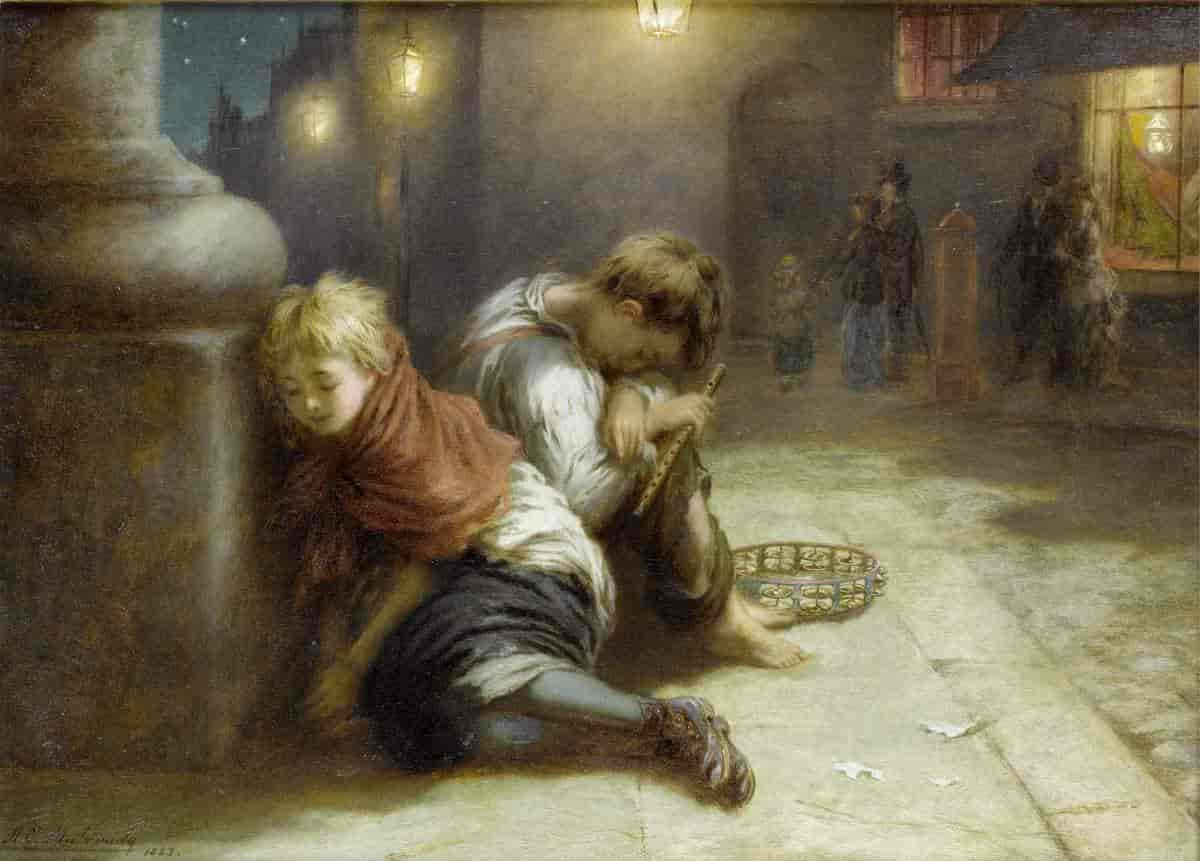
When artists choose to illustrate a single narrative moment, they make a choice of lasting importance, because their illustration creates a memorable impression for an entire story, one that visually anchors an impression of that story in its reader’s memory. Illustration history is full of such memorable moments. In the illustration history of Grimm’s Tales, one image predominates, that of “Hansel and Gretel” beginning to eat the witch’s house.
In “The Musicians of Bremen” the dominant image is of the donkey, dog, cat, and rooster climbing onto one another’s backs and frightening off the robbers.
Ruth Botigheimer, “Illustration and Imagination”
STORY STRUCTURE OF “THE TOWN MUSICIANS OF BREMEN”
Anyone who wants to know how to tell a tale could do much worse than study “The Musicians of Bremen”, both a nonsensical little yarn and a masterpiece, in which the narrative carries not one unnecessary ounce. Every paragraph advances the story.
Philip Pullman
The Town Musicians Of Bremen starts out as a cumulative tale similar to The Gingerbread Man, Chicken Licken and numerous other folk stories which are too often these days designed to lull children to sleep. But in the classic cumulative tales, the child is first lulled into a state of accumulating equilibrium but that’s to make the climax all the more shocking and delightful.
Some modern parents aren’t a fan of such shock, perhaps because parents buy books as bedtime reads. One Goodreads reviewer of the edition by Lisbeth Zwerger had this to say:
Four animals about to be slaughtered by their human traitors, make friends and kick some ass. Then they live happily ever after.
Seriously, out of date and sad if you think about it too much.
A top comment on a 1992 edition has this to say:
I don’t think that even children can enjoy this!! Really!!
Four animals, not wanted anymore by their masters and went to Bremen. During the journey, they found the house of robbers. They made the robbers to leave the house and took hold of the house!!What point is there which even a child can enjoy??? I have read this type of story before. I think that story was inspired by this one. Inspiration was little better.
And the following comments suggest adult gatekeepers prefer children’s stories about anthropomorphised animals when those animals are kept as pets rather than as meat:
What’s with the humans and the will to get rid of their pets once they’re old?! A pet is for life people! ‘Til death do us apart!
I watched this story as a cartoon when I was very young and liked it very much (I still do), it says a lot about faith and friendship which are rare things to find these days
Who the hell kills animals when they are old!!!!
leave them, they surely will die on their own!!!
I have arranged my thoughts on this fairytale about the pets of horrible people into a haiku:
“Spurned by their humans,
It’s no wonder they assume
We’re thieves without cause.”
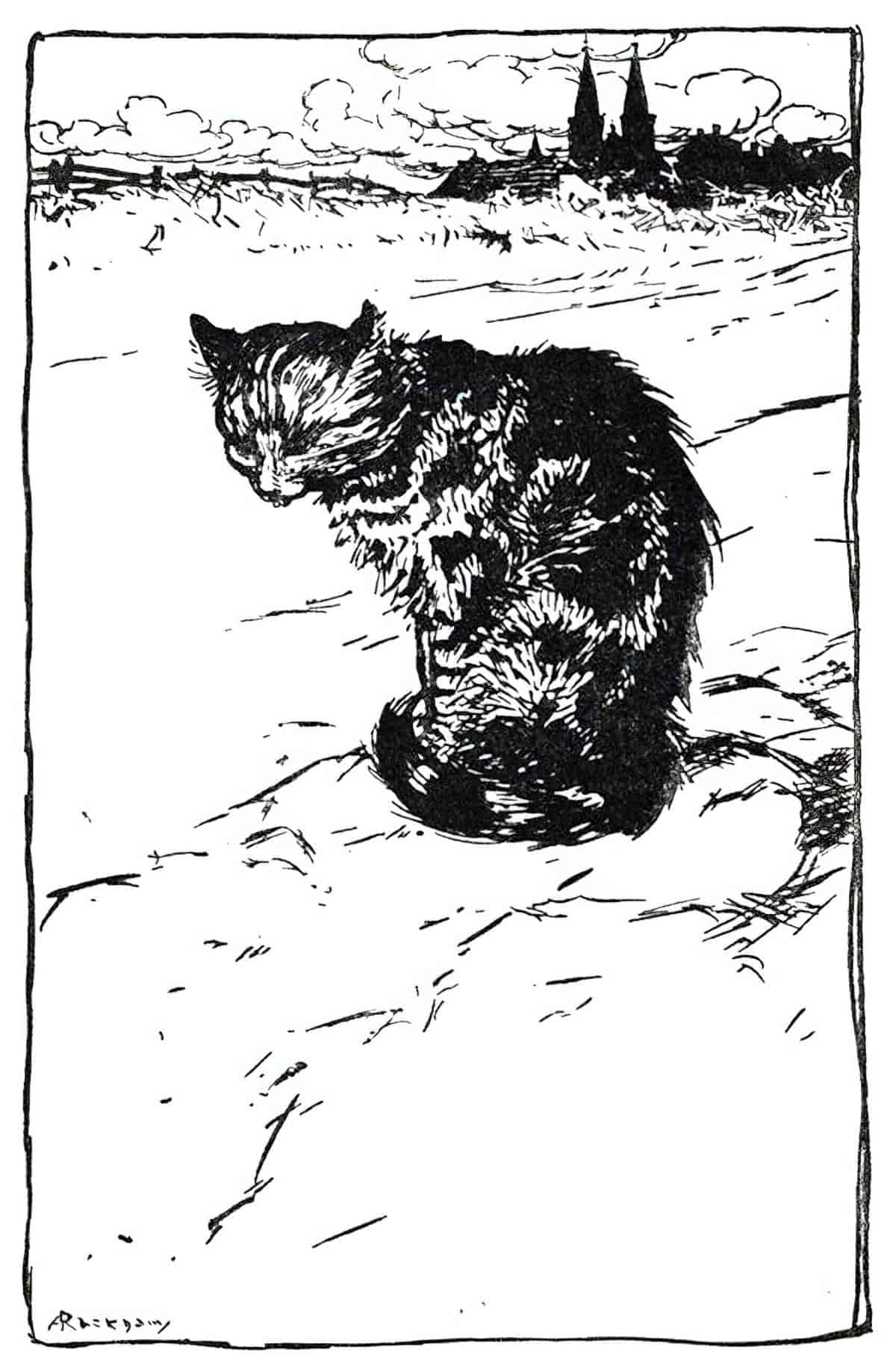
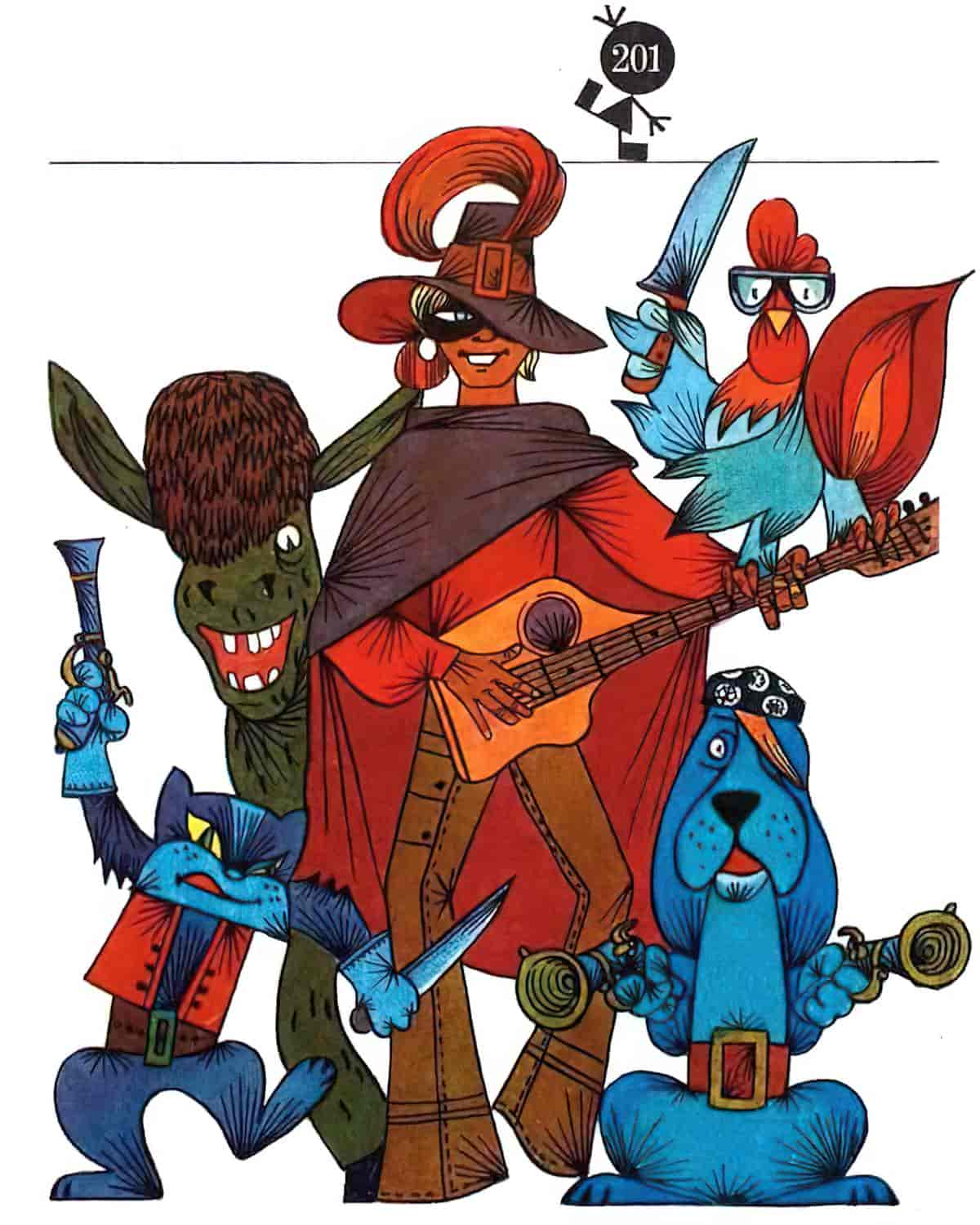
PARATEXT
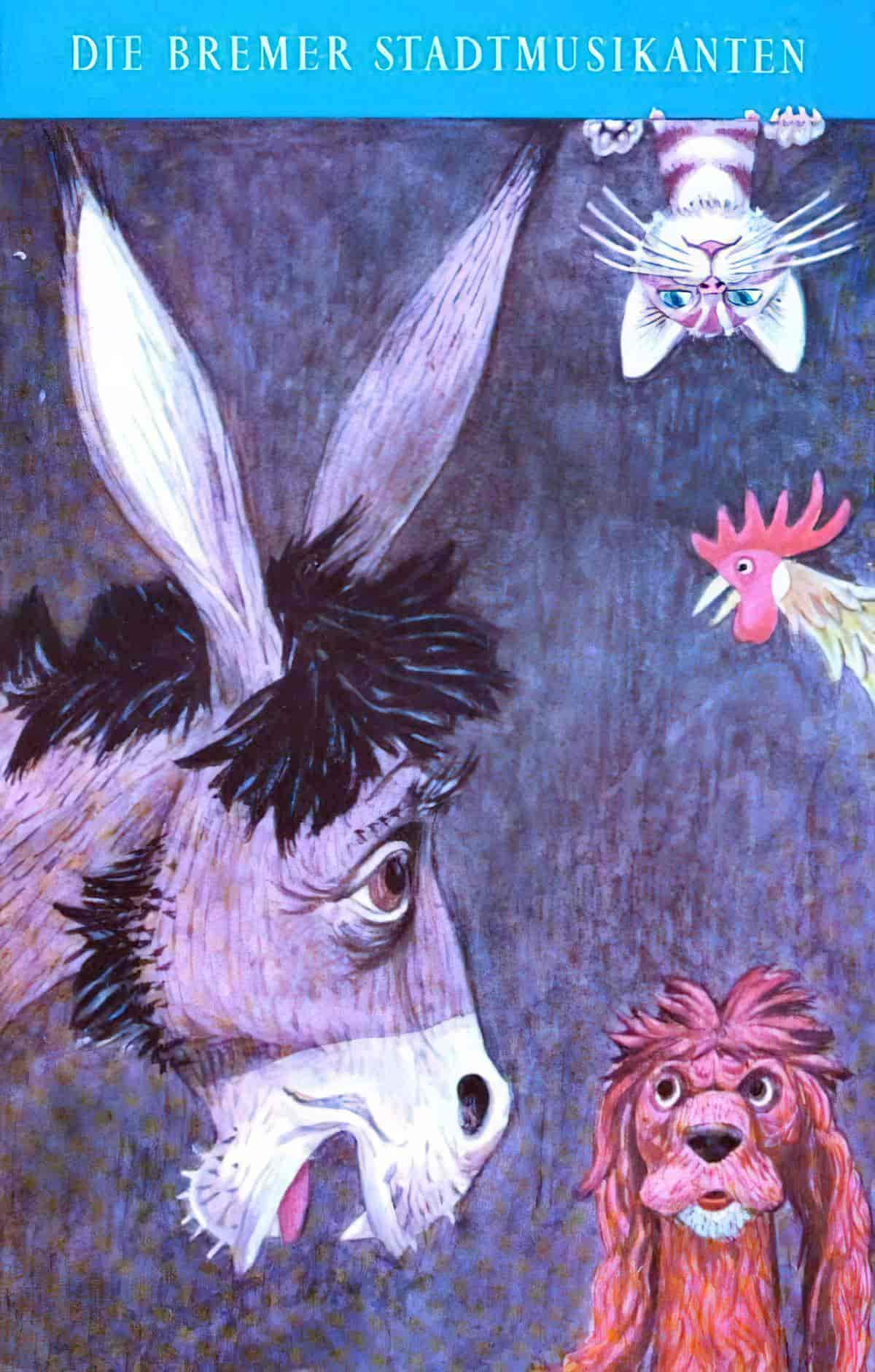
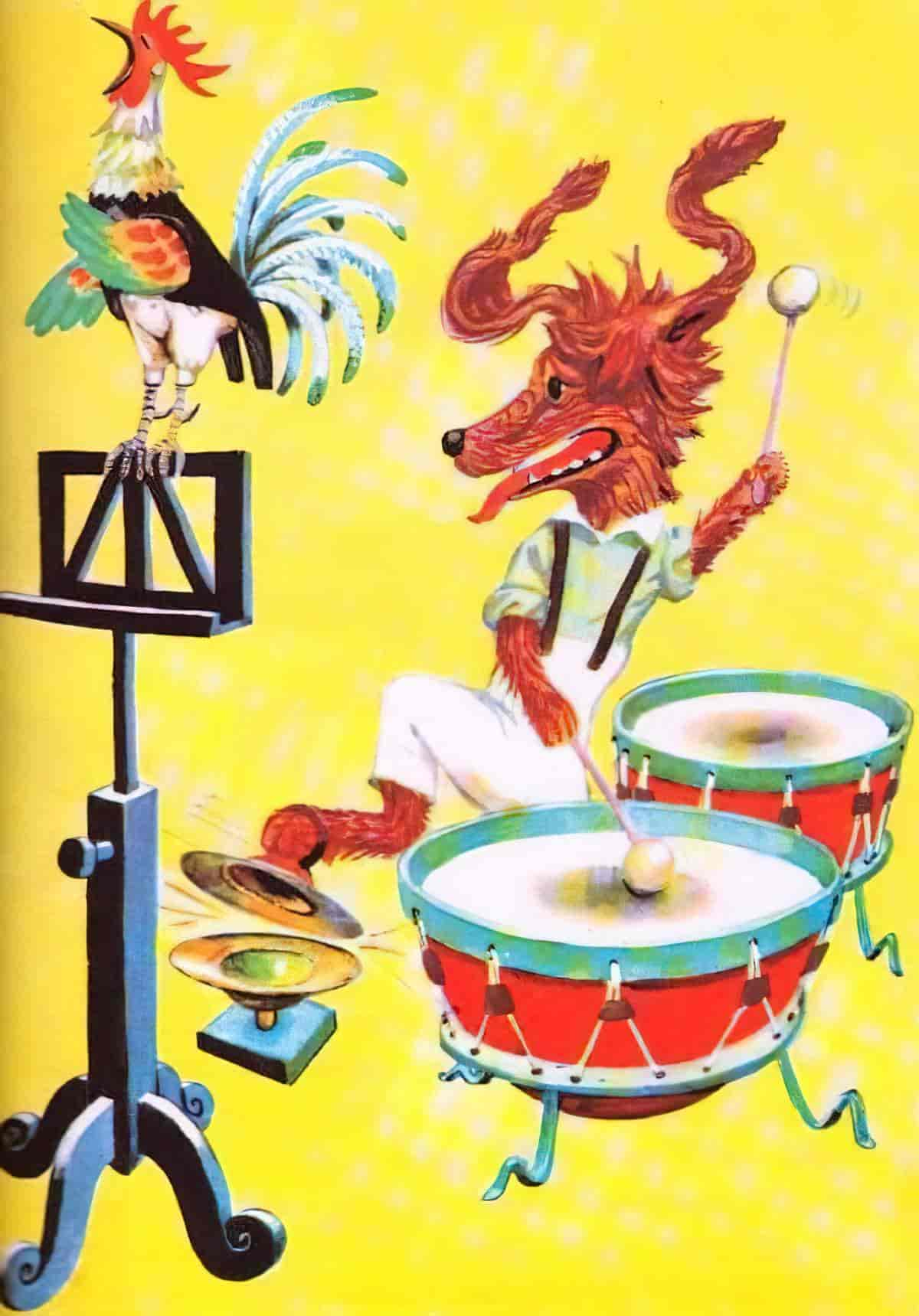
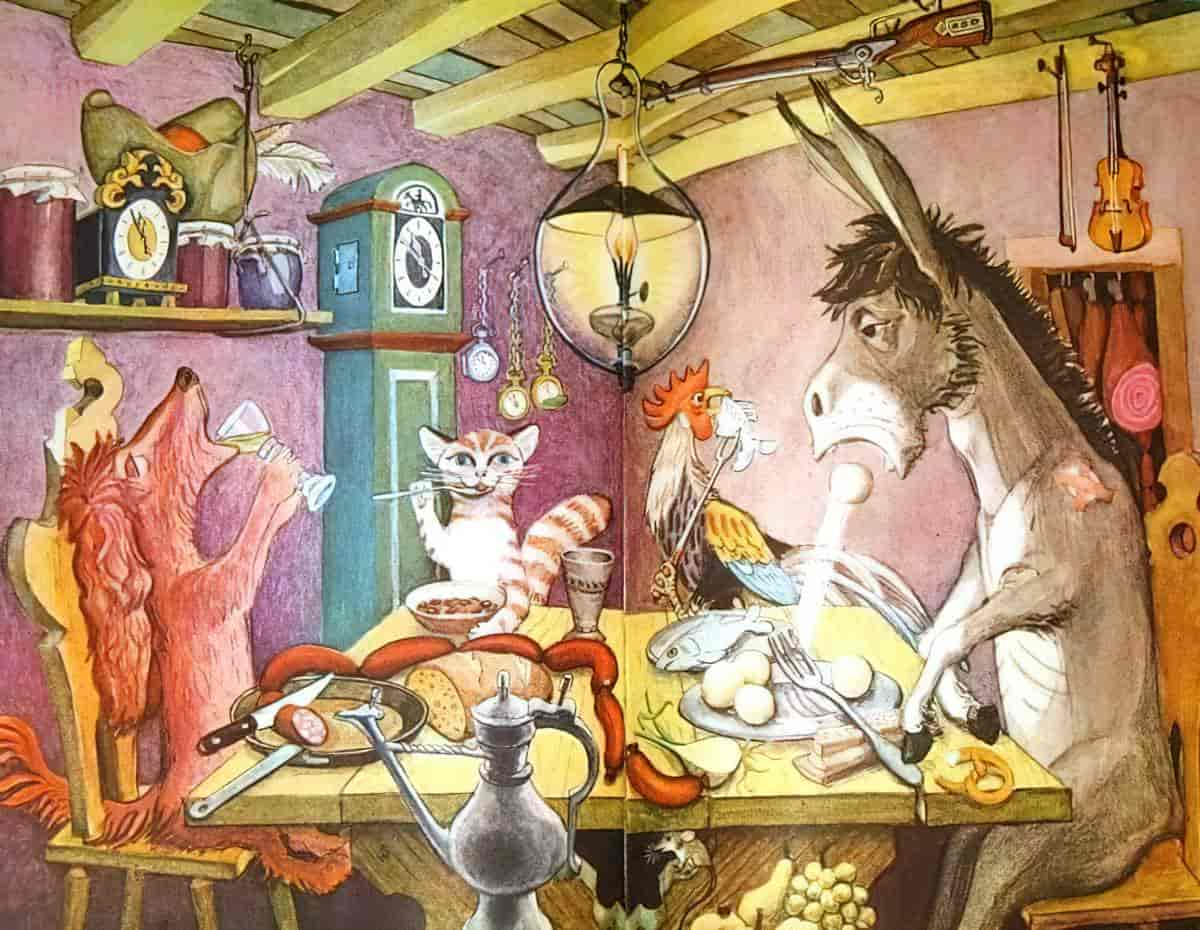
Most people will recognise this tale even if they haven’t heard an early version, such as that recorded by The Grimm Brothers. Modern children will just as likely hear a version starring their beloved franchised characters.
Outside Germany, if people have heard of Bremen, it’s probably due to this tale.
SHORTCOMING
In the Grimm Brothers version, the animals set off on their journey because they are each in danger of losing their lives. Contemporary children’s stories encourage children to look away from the fact that humans butcher animals for their meat and skin, but this is a recent phenomenon. Children of the 17th and 18th centuries saw the death of animals in their own backyards.
The big weakness in these animals is therefore that they are animals, kept in a state of entrapment. This gives them something in common with children, who are likewise dependent on caregivers (if not in danger of being eaten).
DESIRE
One does not simply escape from a barn and become a musician. Especially if one is a donkey! The thought of a donkey performing music on stage is hilarious because a donkey’s bray is hardly melodious. The same can be said for the yowl of a cat, the bark of a dog and the yodelling of a rooster. This story features the most noisome characters from your stock farmyard cast.
What they really want, of course, is freedom and a bit of respect. And not to die.
When they see the cottage, the animals are drawn to the squares of yellow light. I read a Richard Scarry version as a kid, and I have to say this image is one of the most resonant images from my childhood. I was strongly drawn to that yellow window in the distance, promising warmth and safety.
OPPONENT
The unseen opponents are the humans who want to kill them. These humans could be all of us (except vegans).
The human opposition soon gets a face: These three men are burglars. How do the animals know immediately that these guys are burglars? Because they look like stereotypical burglars. They’re stocky and hairy and though they keep jewels in their house, the house isn’t a castle.
(Judging people through a window and making assumptions about their wealth and status is not morally questioned in this tale.)
PLAN
The animals would love to live in this cosy cottage. Like The Three Billy Goats Gruff, they work together to make a plan. The best tales are an ode to the cooperative power of humans banding together in times of adversity.
We see the plan being carried out. Almost all illustrated versions depict the animals standing on each other’s shoulders outside the window. It’s an obligatory scene to precede the big scare. The children see what’s happening before the robbers do, making the robbers inferior to the audience.
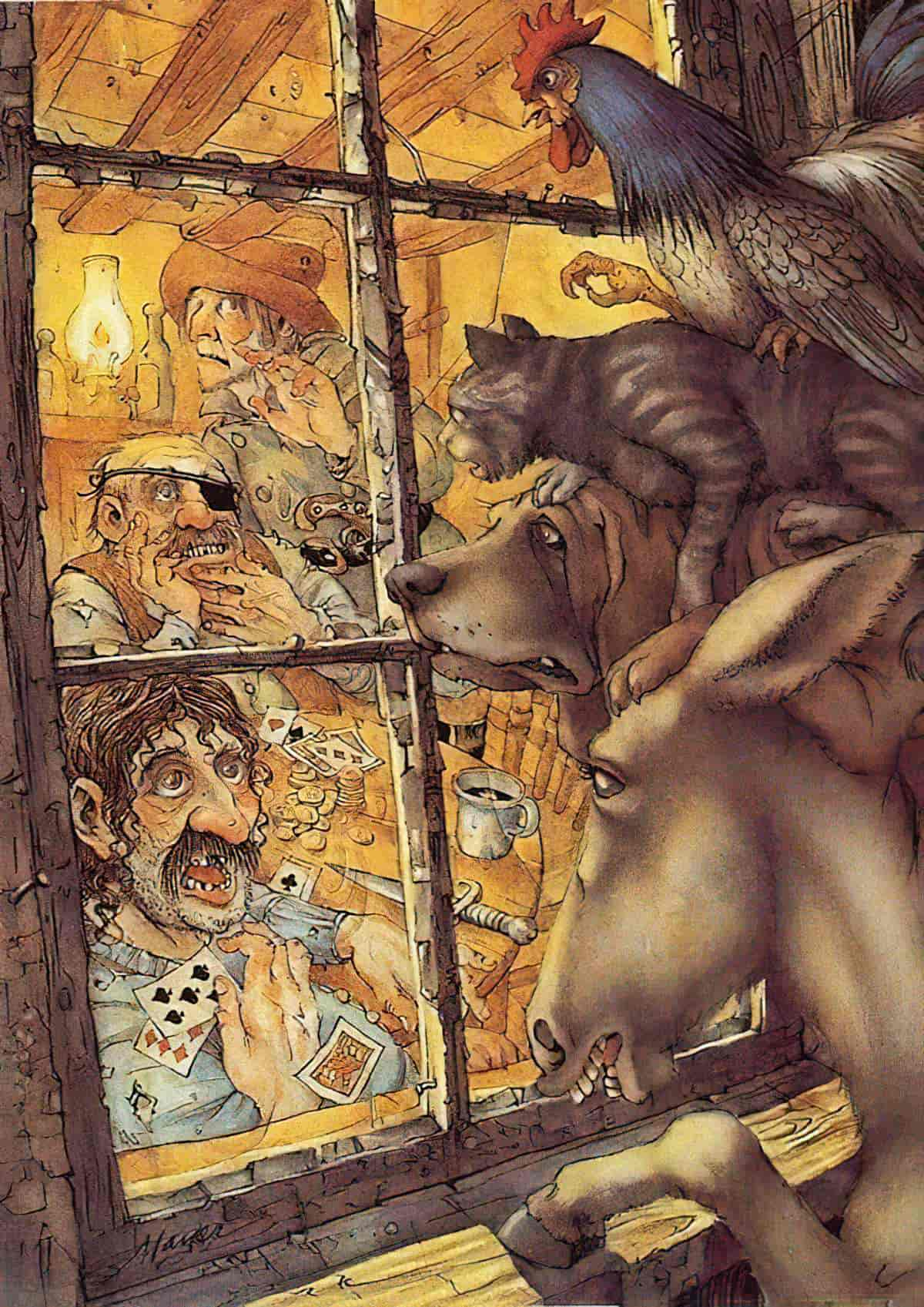
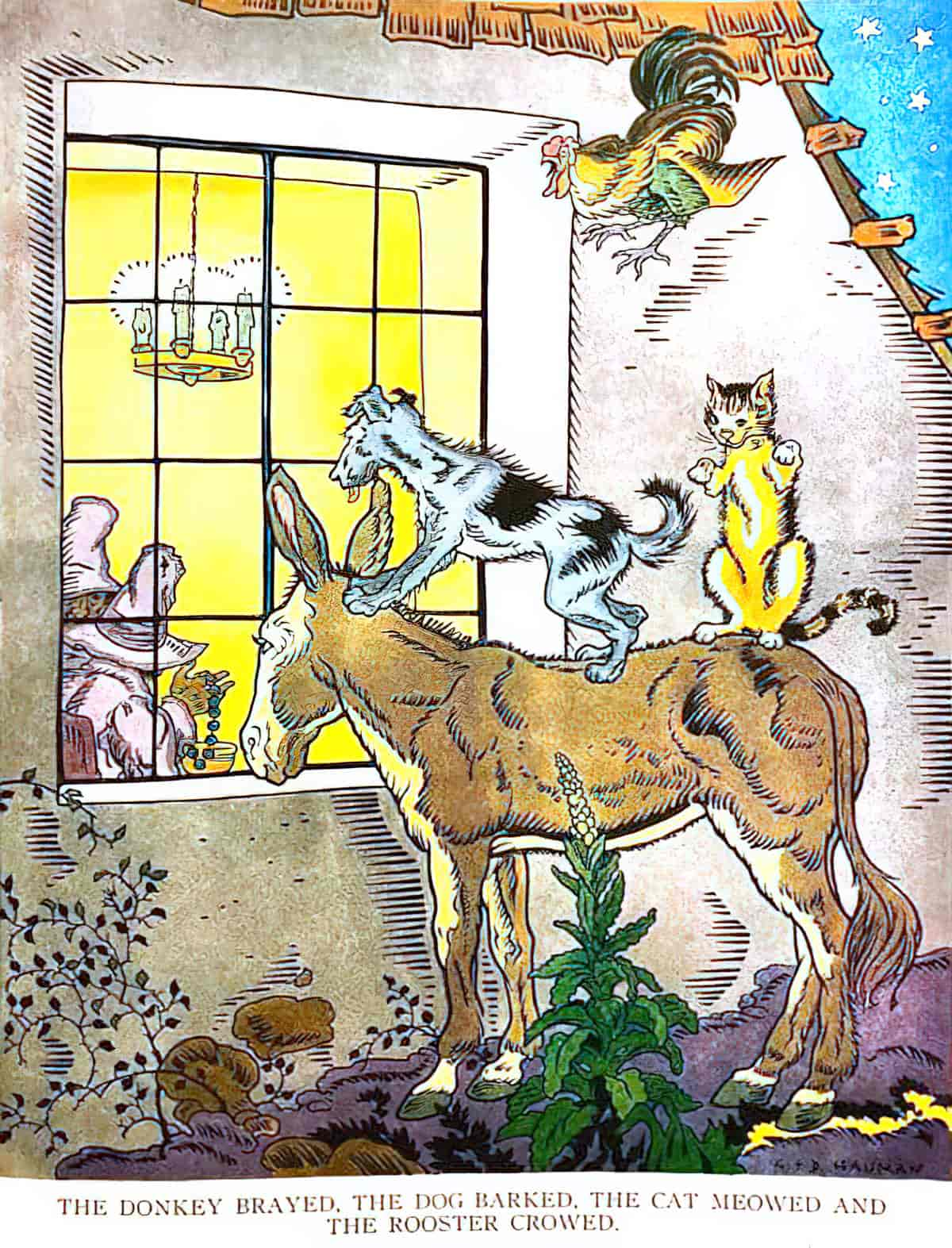
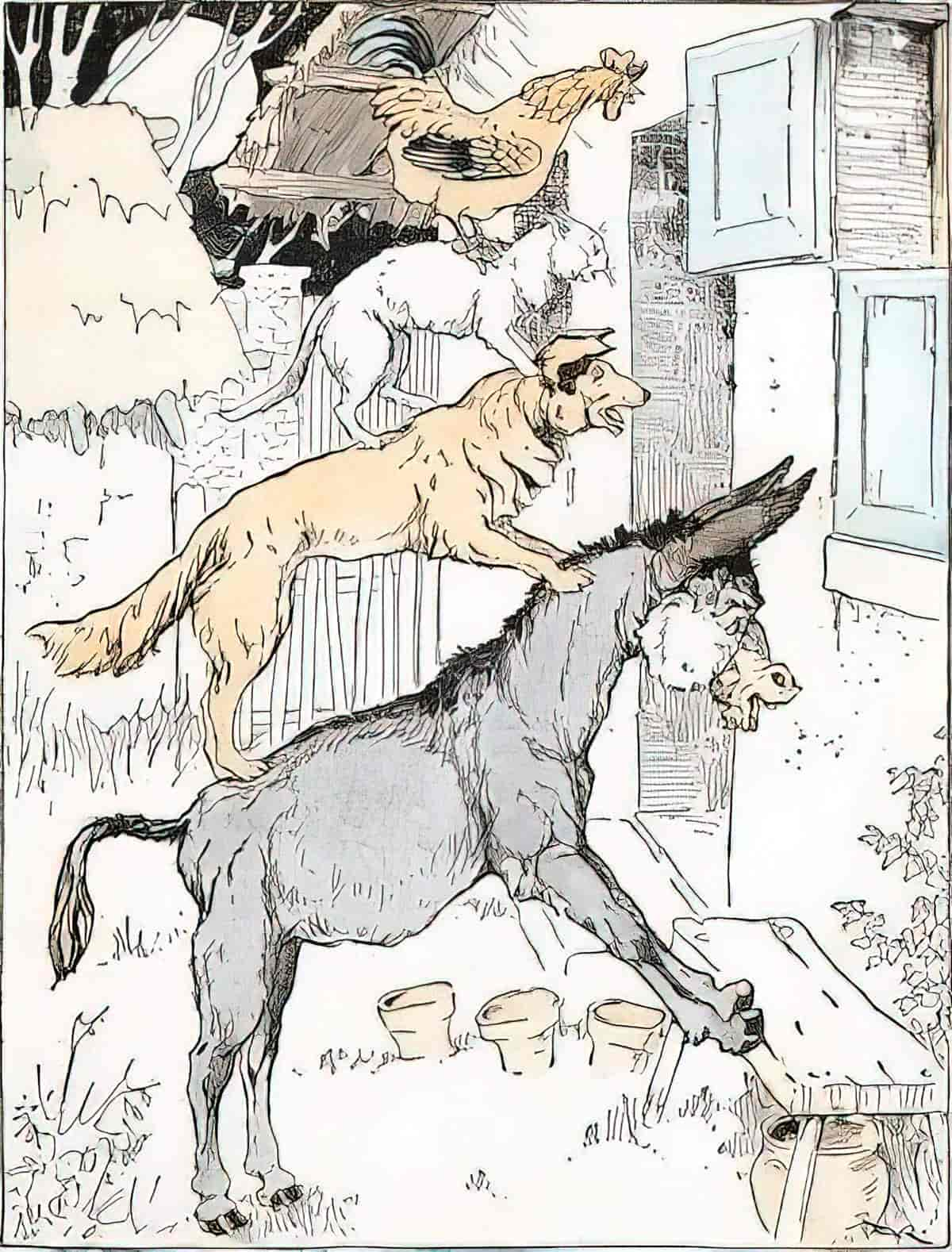
Like contemporary cheerleaders, the animals stand on each other’s shoulders to form a towering, chimerical giant then scare the robbers who are eating inside. The robbers clearly believe in ghosts.
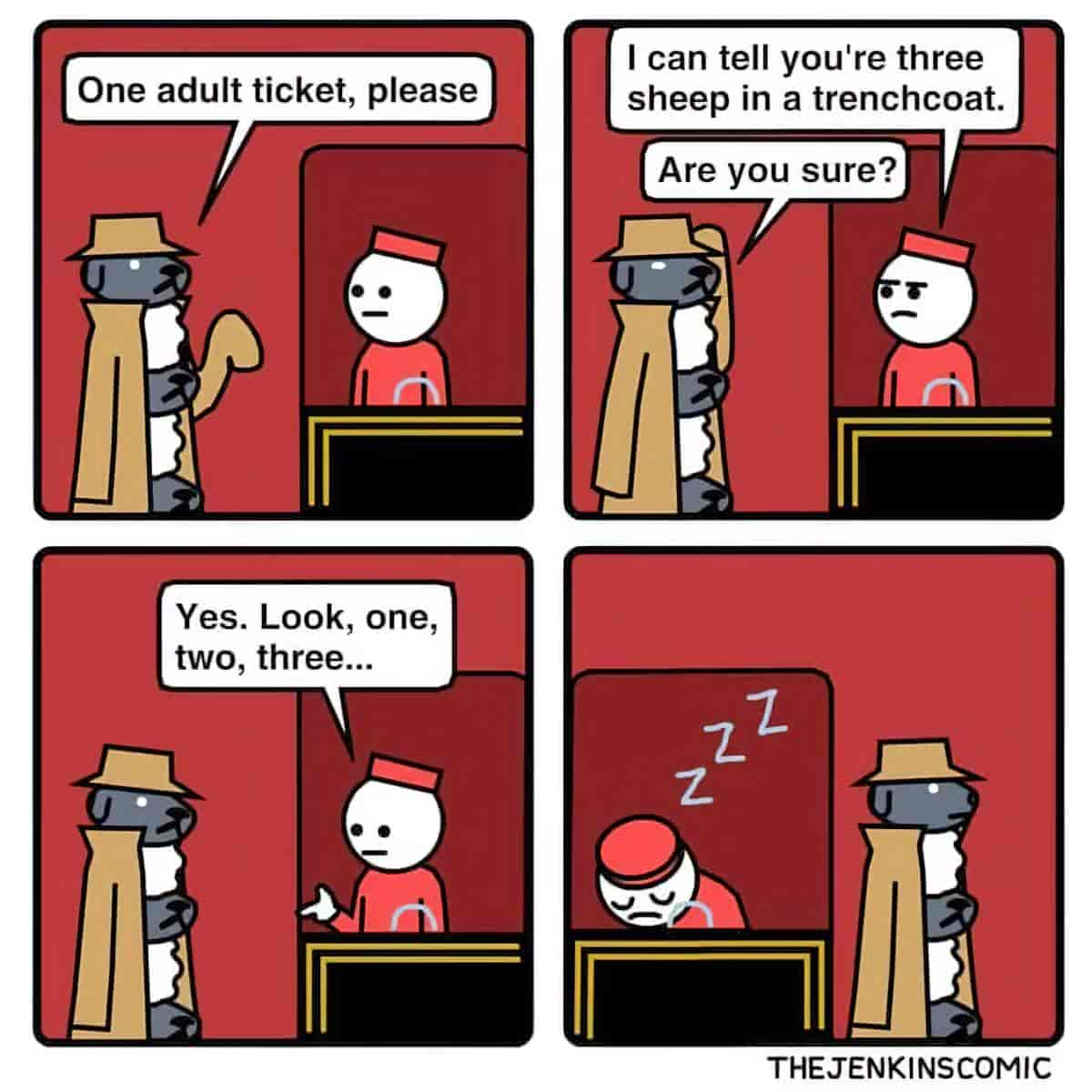
The wonderful thing about this particular climax: Although these animals think they have what it takes to make a living by singing on the stage, it is actually their raucousness which ends up saving them. This is masterful irony, and endears these animals to us.
At this point I start to wonder if the burglars are going to return, which is exactly what I’m supposed to be thinking.
THE BIG STRUGGLE
The story switches point of view, and now we see the robbers, who have escaped into the forest. They decide the burliest of the lot will return to the house to see what that thing witnessed through the window really was.
When the robber returns to his cottage he is already so spooked that he doesn’t see what’s really there, but an embellished version through the darkness. This part of the story reminds me of the Chinese folktale in which three blind men encounter an elephant. Each of them touches a small part of it and comes to his own conclusion about what the creature is.
A moral is conveyed here, though it may get lost among the carnivalesque chaos: Don’t make assumptions after looking at only a small part of a problem.
ANAGNORISIS
The robbers realise they’ll never be able to return home.
The animals have already realised this. This is a sort of revenge tale on humanity. Aren’t we all robbers, of animals’ freedoms and lives. This is the reader’s realisation.
NEW SITUATION
Despite what the various titles suggest, the animals never go to Bremen. They decide to live in the robbers’ cottage.
The danger of writing a story in which the plans completely change: Some readers will feel ripped off by the ending:
Personally, I don’t like this story because of its ending. Though the title of this story is “The Bremen-Town Musicians”, the animals actually did not go to the town. They came together to become musicians, but when they found enough food and cozy house, they decided to stay there. I expected they would keep going their journey to the town and finally, would be musicians. Because of this ending, I don’t want to recommend it.
Goodreads reviewer of a 1992 edition
But I think in that case, the issue is with the title because in almost any story, initial plans change. That’s what beefs out a story.
However, I suspect any reader with a sense of irony will fully appreciate that the animals’ plans do not come to fruition.
EXTRAPOLATED ENDING
It’s clear to the reader that those burglars won’t be coming back. Not only that, but the animals are living in a cottage full of stolen loot. We can assume they’re not about to hand it in to the authorities.
The animals are basically thieves themselves now, and they’ll get away with it. These animals are also sympathetic viewpoint characters, so the reader won’t be thinking about that.
A large number of children’s stories end with a food-sharing party scene, including some versions of this folktale.
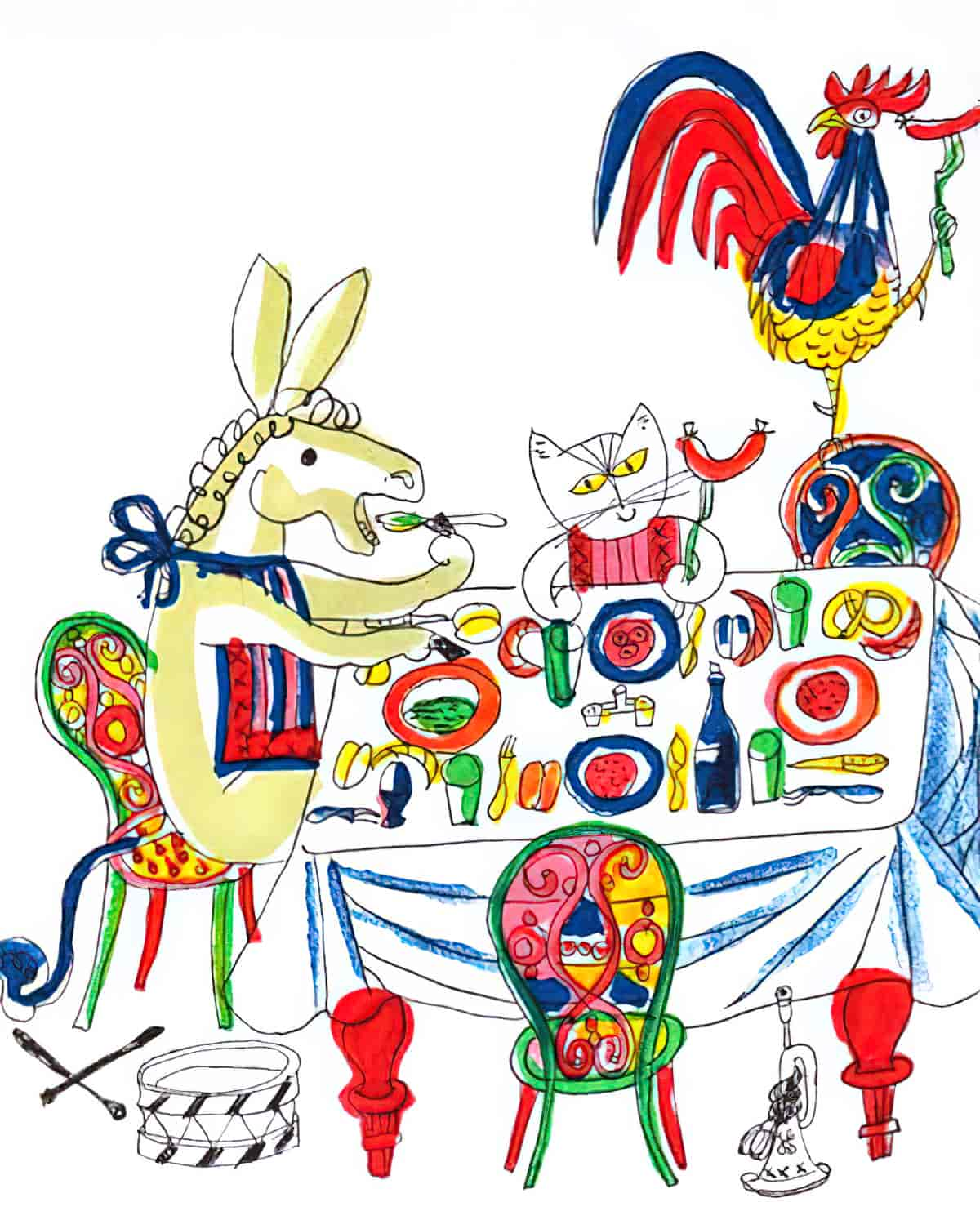
RESONANCE
The Town Musicians Of Bremen is the basis and inspiration for many modern retellings. The plot is so sturdy (as explained above by Philip Pullman) that writers and marketers really like to insert their own branded characters into the tale.
For instance, in 1972, Jim Henson produced a version with his Muppets called The Muppet Musicians of Bremen.
I grew up with Richard Scarry’s version, in Richard Scarry’s Animal Nursery Tales (1975). A donkey, dog, cat and rooster set out on their journey because they are bored with farming, not because they’re in danger of being killed.
The story is well-known internationally. The 1991 Sierra adventure game Mixed-Up Fairy Tales includes Bremen Town Musicians as one of the stories the player must correct.




